Nearly 1 in 5 people who get body contouring say they avoid swimwear because of visible scarring. This shows that surgery changes your shape but not always your confidence.
If your tummy tuck left a low scar above the pubic area, you have options. Tummy tuck scar camouflage tattoos can blend pale scar tissue with pigment.
This makes the line less noticeable without cutting skin again.
Others prefer artistic solutions. Decorative abdominal tattoos post tummy tuck can turn a scar into a design you want to show off.
If you’re not ready to commit, temporary options like TuckTats give you days of coverage.
This piece will show you tummy tuck cover up tattoos. It will explain how skin-tone camouflage differs from artistic cover-ups. You’ll also get practical tummy tuck tattoo ideas to decide which hides your transformation best.

Why people choose tummy tuck scar cover up tattoos
People might choose a tattoo to cover up scars because it feels immediate. After surgery, a long horizontal scar can make you feel self-conscious. A good tattoo can hide the scar, making your body look and feel like yours again.
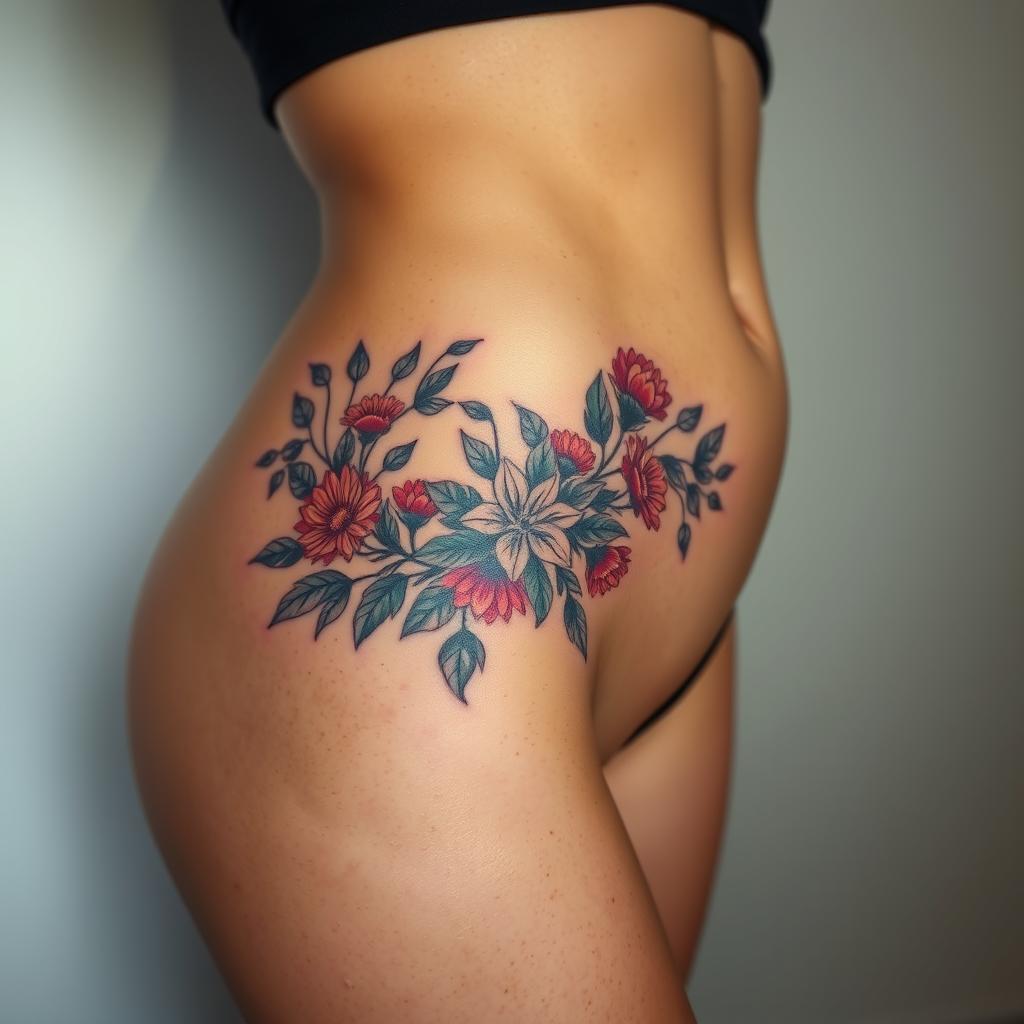
Many pick tattoos after tummy tucks to avoid more surgery or laser treatments. Laser removal can cost a lot and take many sessions. Tattoos can be quicker and less invasive.
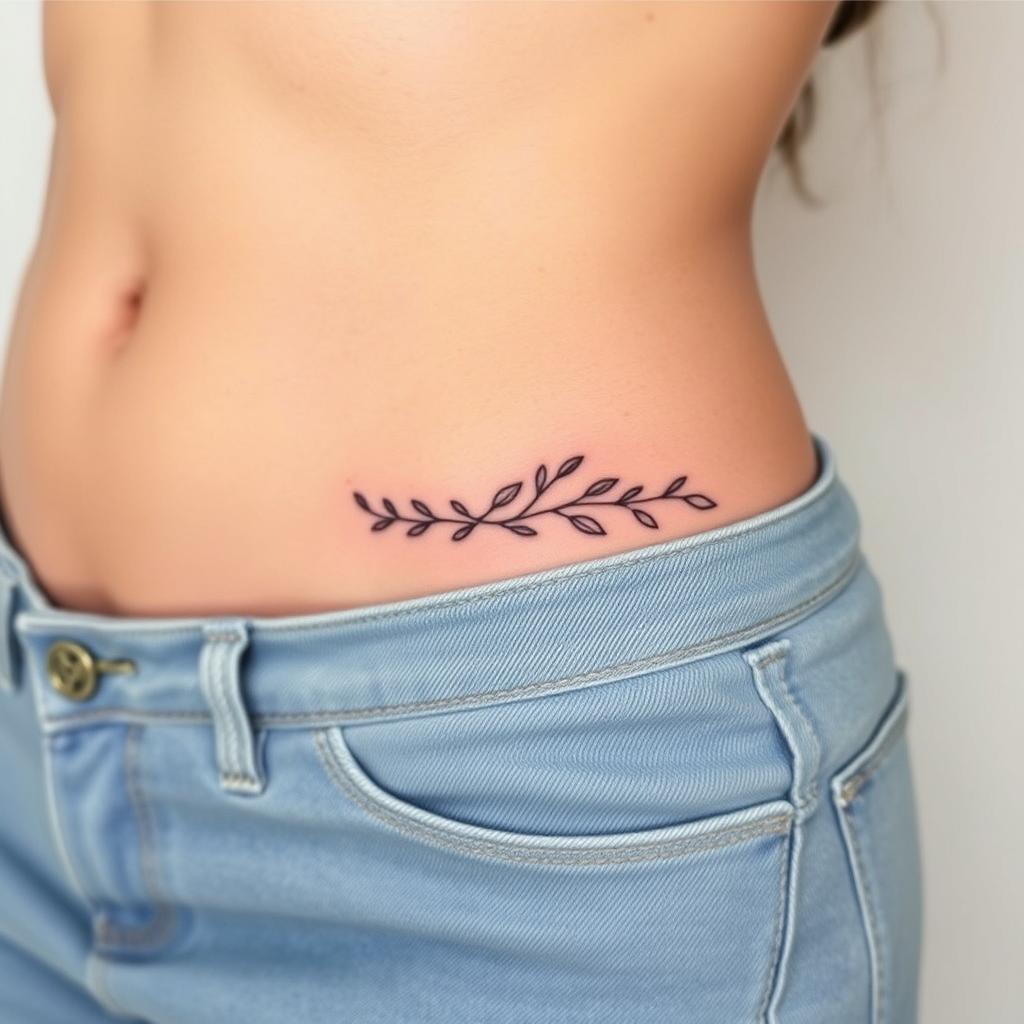
Artistic choices are important too. Floral designs, mandalas, or butterflies can hide scars while looking good. Temporary tattoos like TuckTats let you try designs before getting a permanent one.
Emotional benefits are big too. Hiding scars can make you feel free to wear what you want. You can wear bikinis, dresses, or lingerie without worrying about your scar.
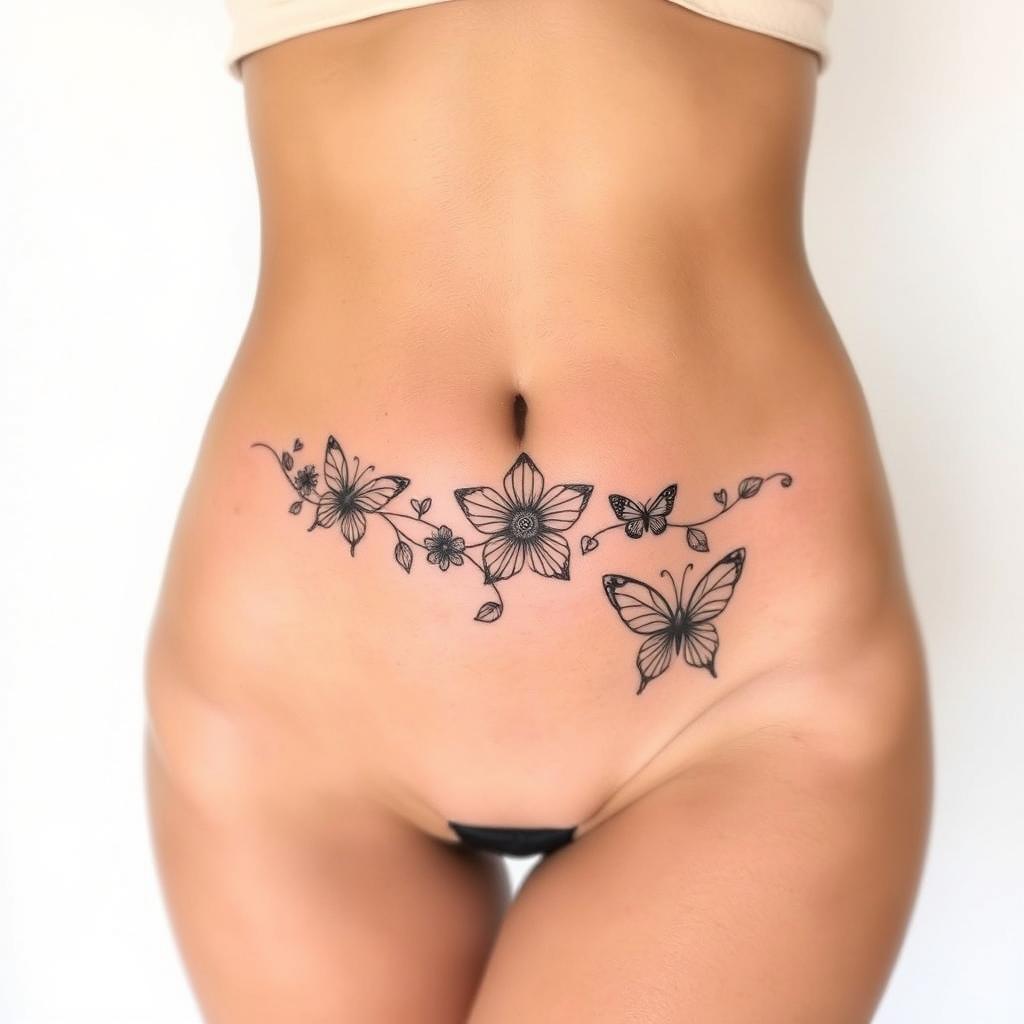
Practical reasons also matter. Scar texture or color can be hard to fix with surgery or laser. A tattoo artist can create a cover-up that works with your body.
Remember, tattoos are about more than looks. They can help you feel confident and free without long medical treatments.
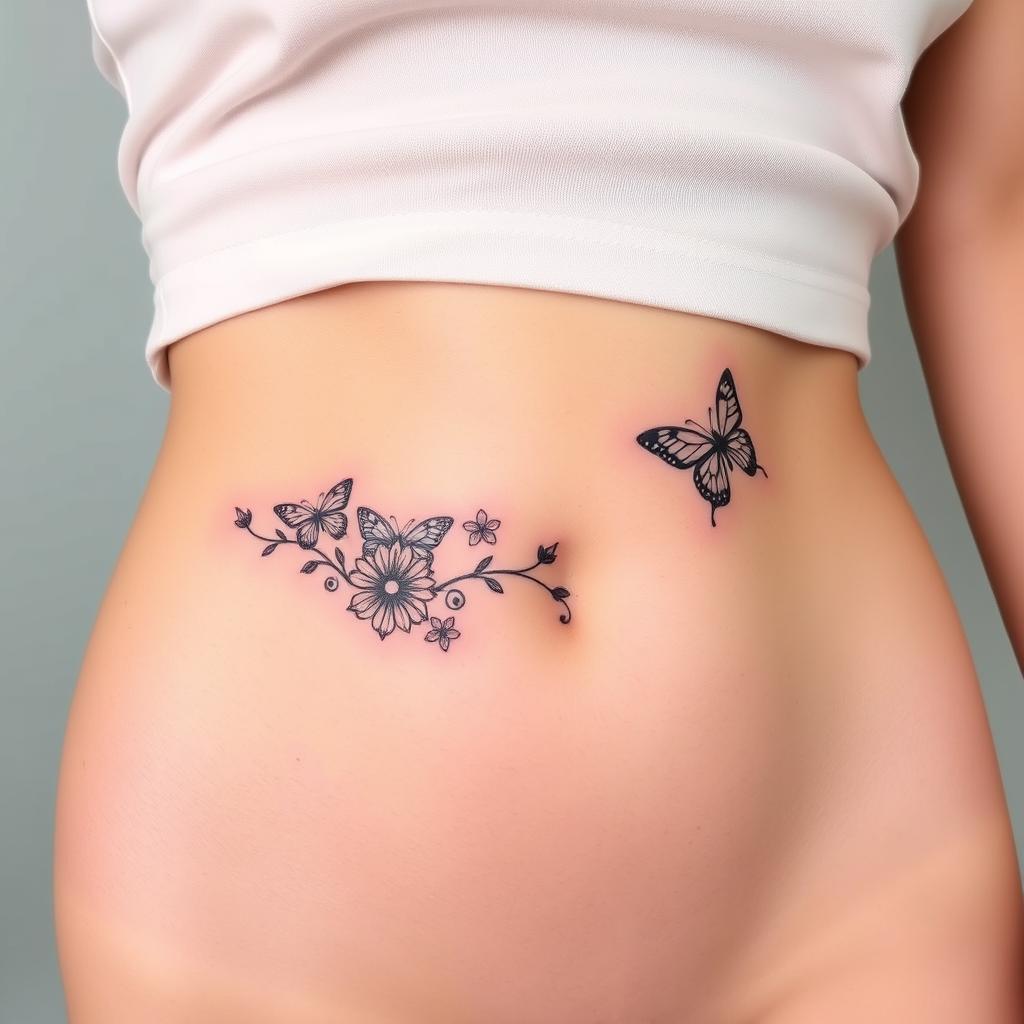
Tummy tuck cover up tattoos
Looking for ways to hide an abdominoplasty mark? Tummy tuck cover up tattoos offer two main options.
You can choose subtle pigment that blends with your skin or an artistic design that incorporates the scar.

Definition and how this specific phrase differs from general scar tattoos
Tummy tuck cover up tattoos are for scars from lower abdominal surgery. They differ from general scar tattoos, which can cover various marks. Artists consider the scar’s placement, length, and how it moves with your skin.
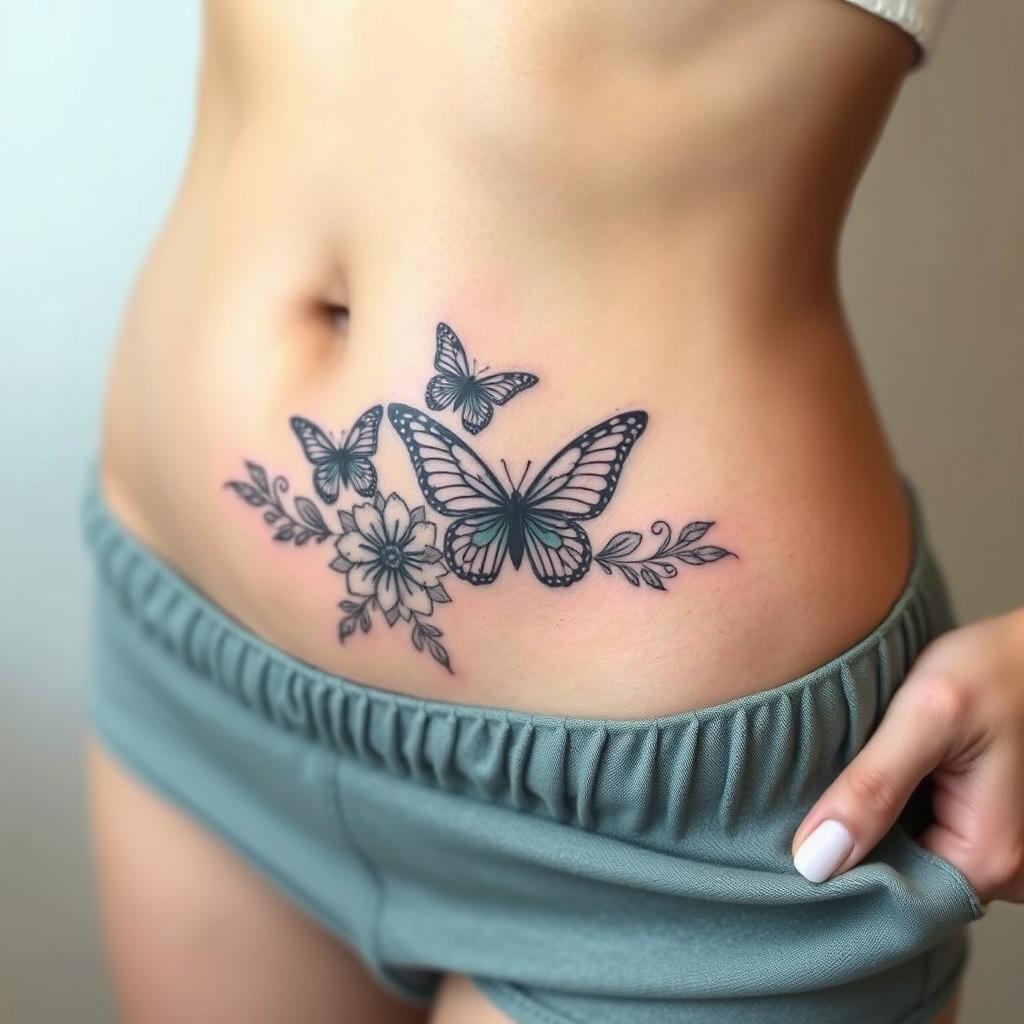
Examples of skin-tone camouflage versus artistic cover-ups
Skin-tone camouflage uses special pigments to blend scars with the skin. It aims for a natural look.
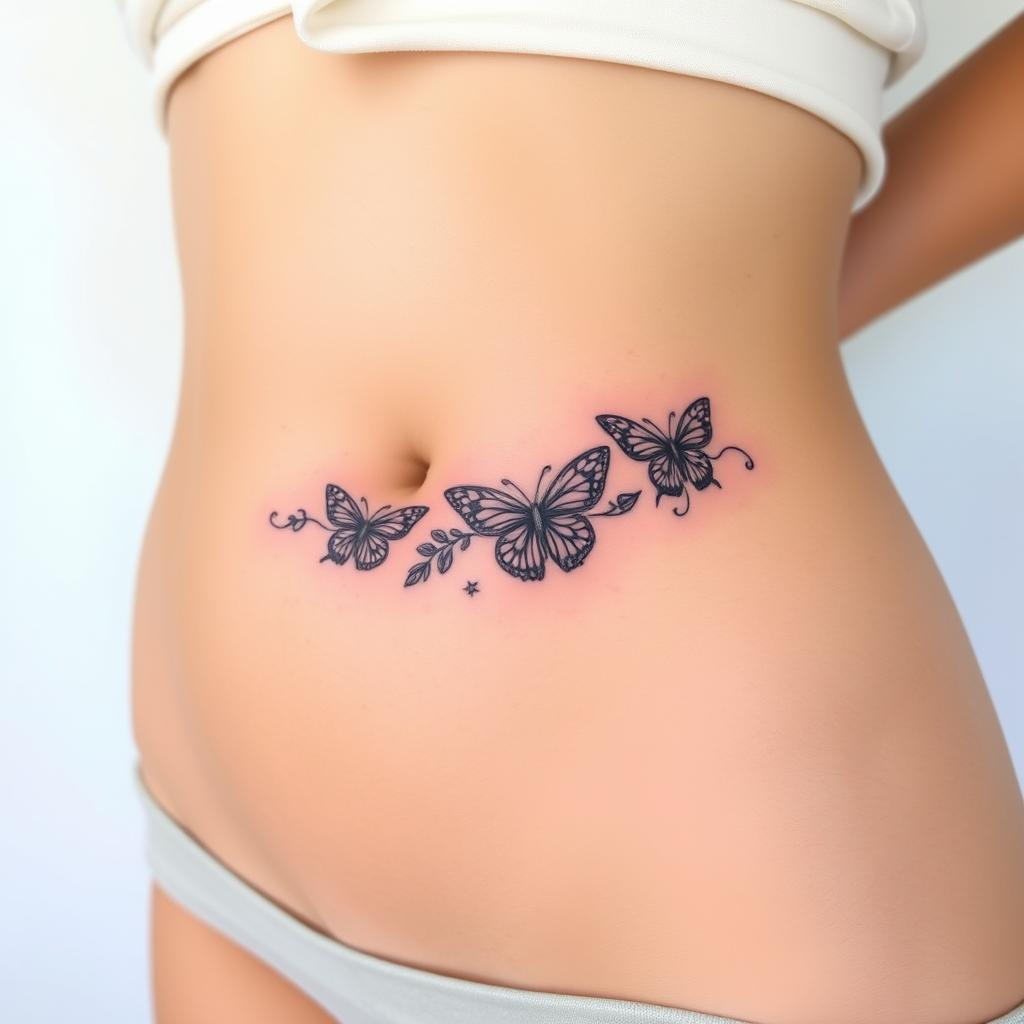
Decorative cover-ups, like floral designs or mandalas, draw attention away from the scar. They use shape, color, and pattern to hide the mark.
Where this solution fits in the post-surgery timeline
Wait until your scar is fully healed before getting a tattoo. Most say two years for the redness and texture to settle. Tattoos too soon might not look right as the scar heals.
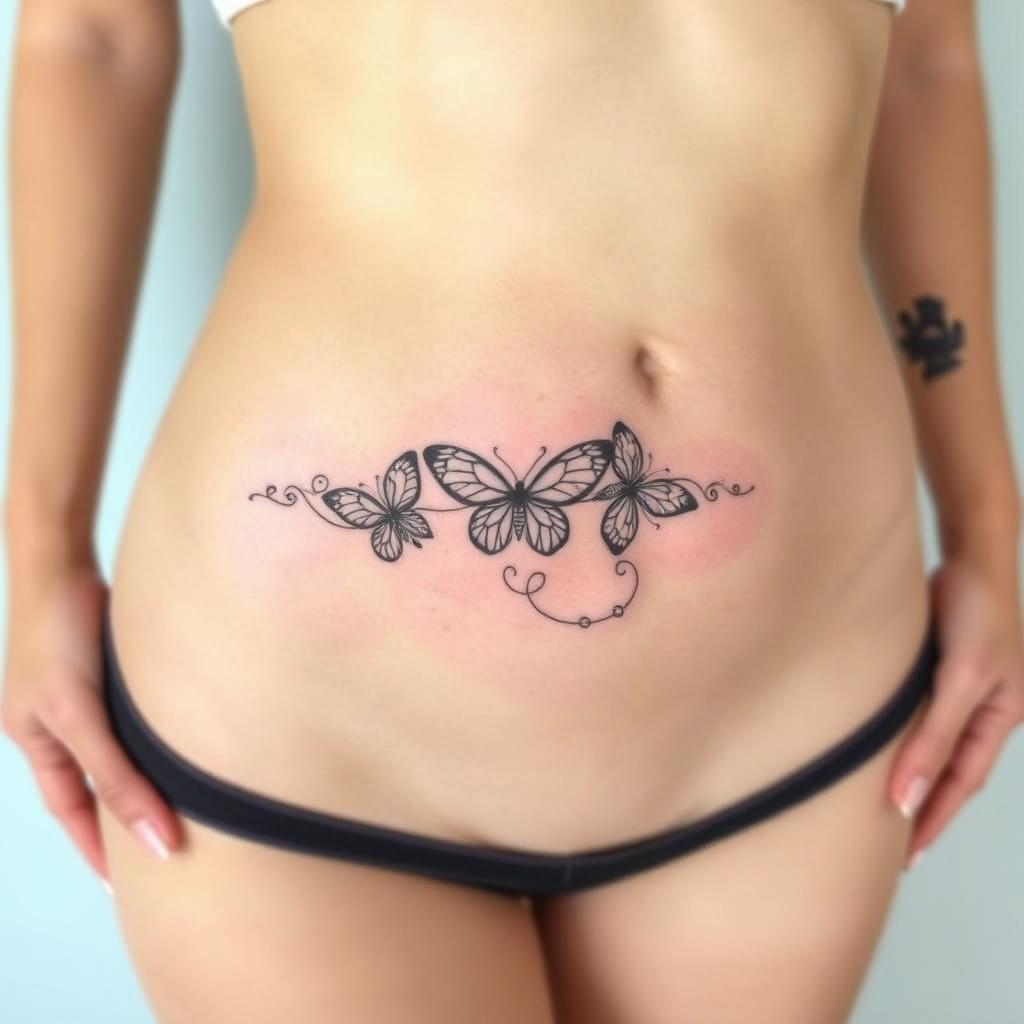
If you need coverage sooner, try temporary tattoos or medical-grade adhesive pieces. They’re good for events while you wait for a safe tattoo.
Types of tattoo techniques for hiding tummy tuck scars
Ready to hide a tummy tuck line? Many tattoo methods can help. Each method has its own goal: blending colors, hiding scars, or matching textures. The right technique depends on your scar, skin tone, and desired permanence.
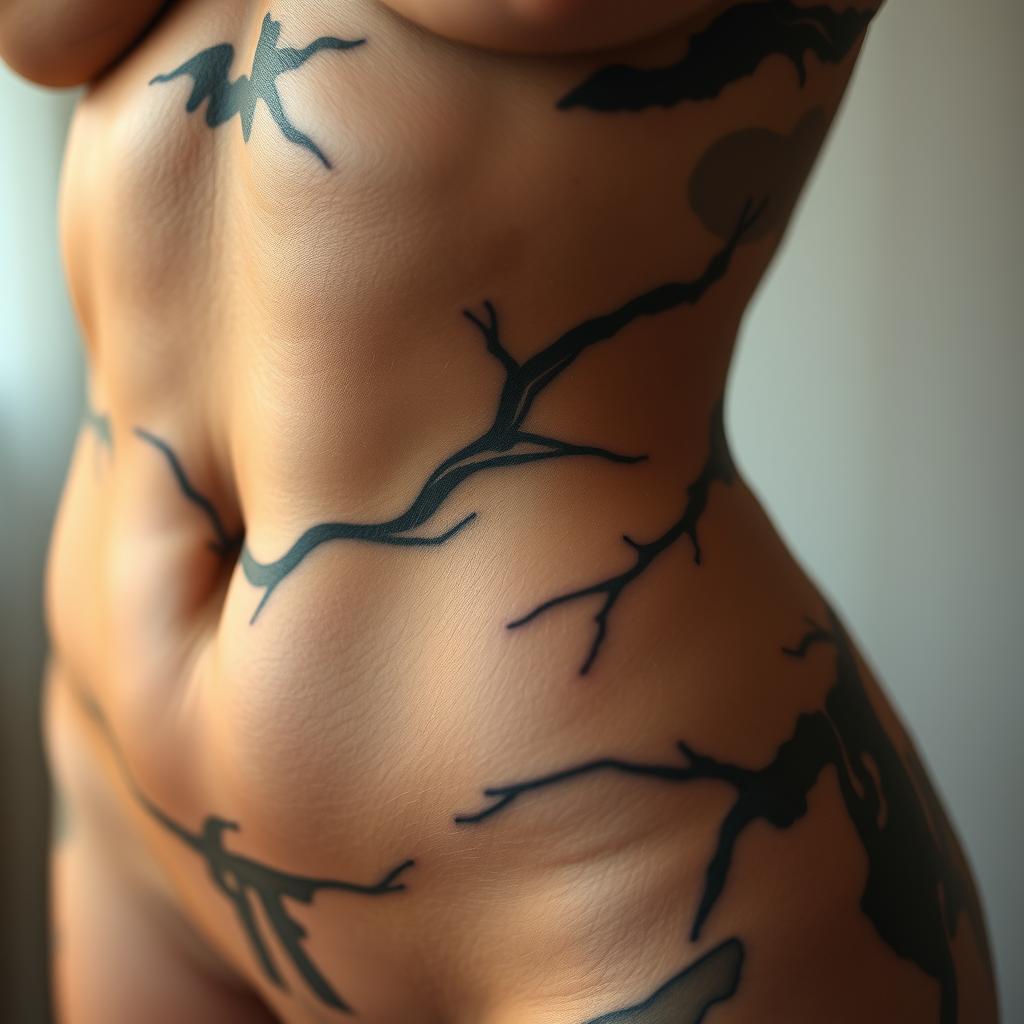
Scar camouflage (skin-tone pigment infusion) explained
Scar camouflage uses pigments that match your skin. A skilled artist does medical tattooing to blend the scar with your skin. Sessions are quick, often under an hour, and touch-ups might be needed.
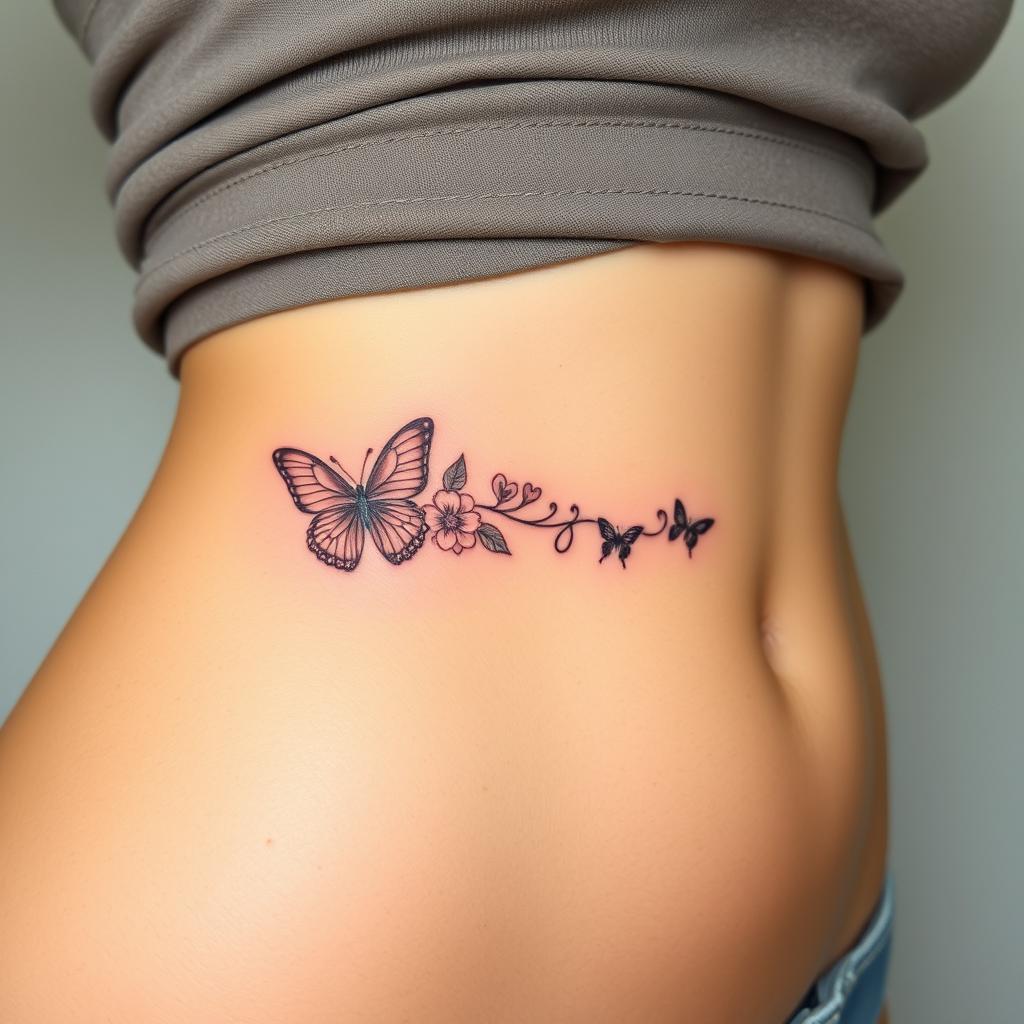
The method needs careful color matching and layering. Scar tissue takes ink differently than regular skin. So, an experienced artist is key for natural-looking camouflage.
Decorative cover-ups: floral, mandala, and large-piece designs
Decorative cover-ups turn scars into part of a bigger design. You can choose from floral, mandala, or wrap-around pieces. These designs hide the scar and draw attention to the design.
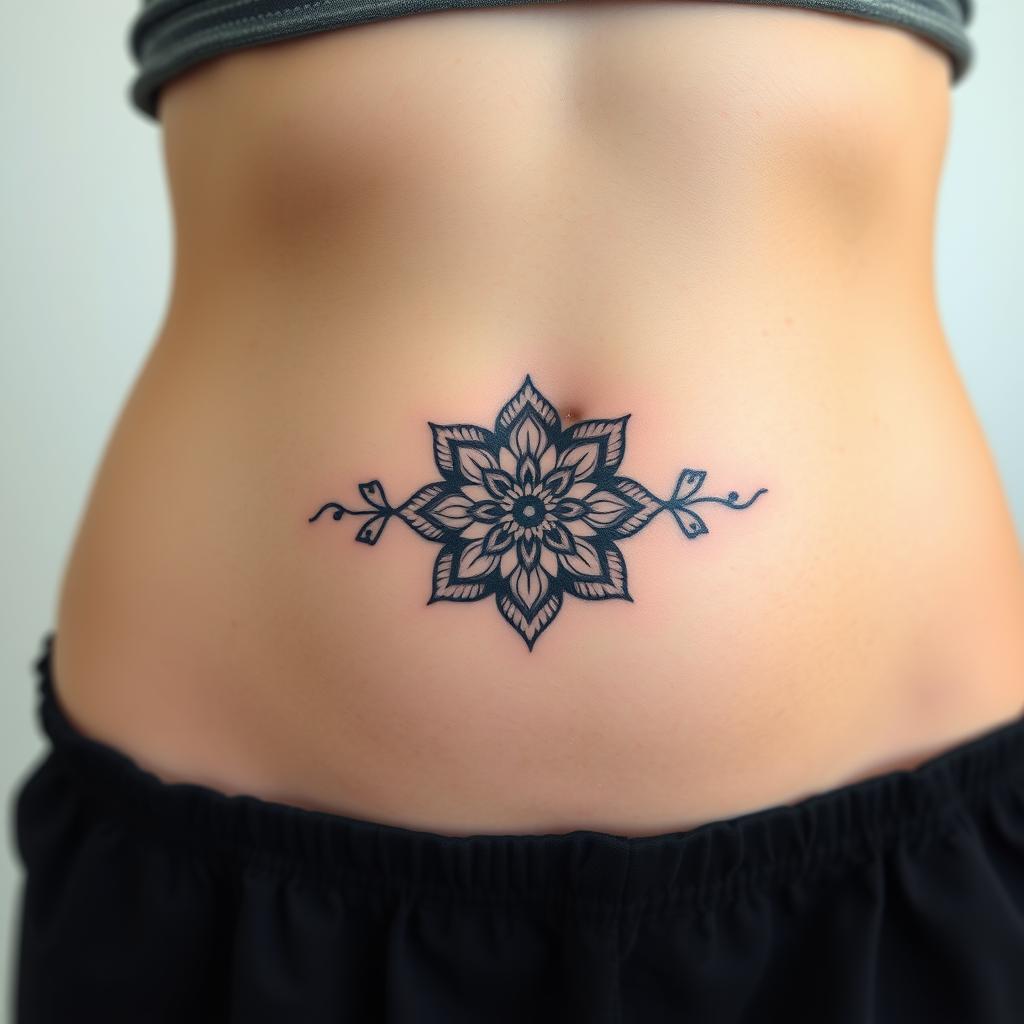
Floral or black-and-white tattoos are popular for lower abdominal scars. Try temporary tattoos to see what you like before getting a permanent one.
Microrealism and medical tattooing options for texture matching
Microrealism uses tiny dots and lines to look like skin. It works well with medical tattooing to make scars less noticeable. This is great for raised or indented scars.
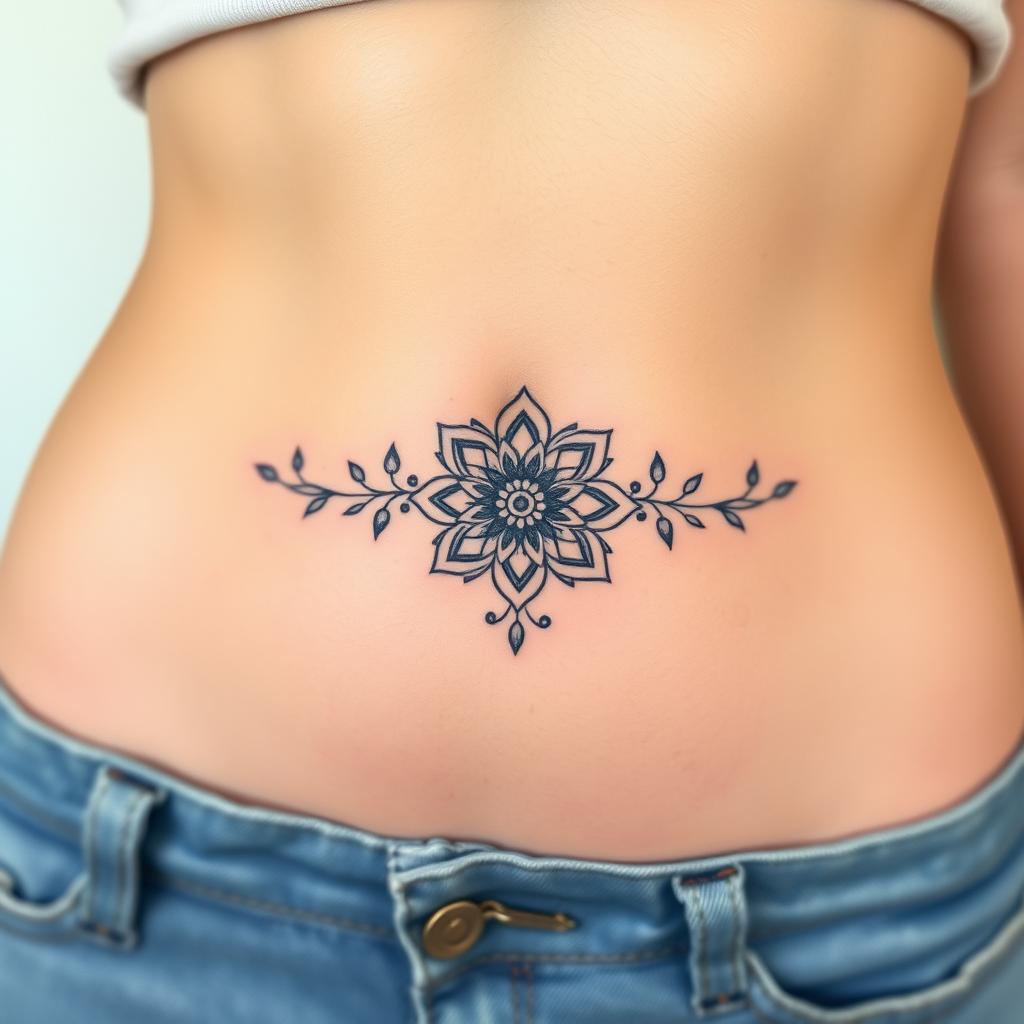
Scar tissue is different from regular skin. A specialist who knows about healing and tattooing will give you the best results.
Best tattoos to hide tummy tuck scars: design ideas
Choosing the right tattoo for your belly is all about what you want. You might want something that’s barely seen, a bold design that stands out, or a wrap that covers a long scar. These choices are what artists talk about during your consultation.
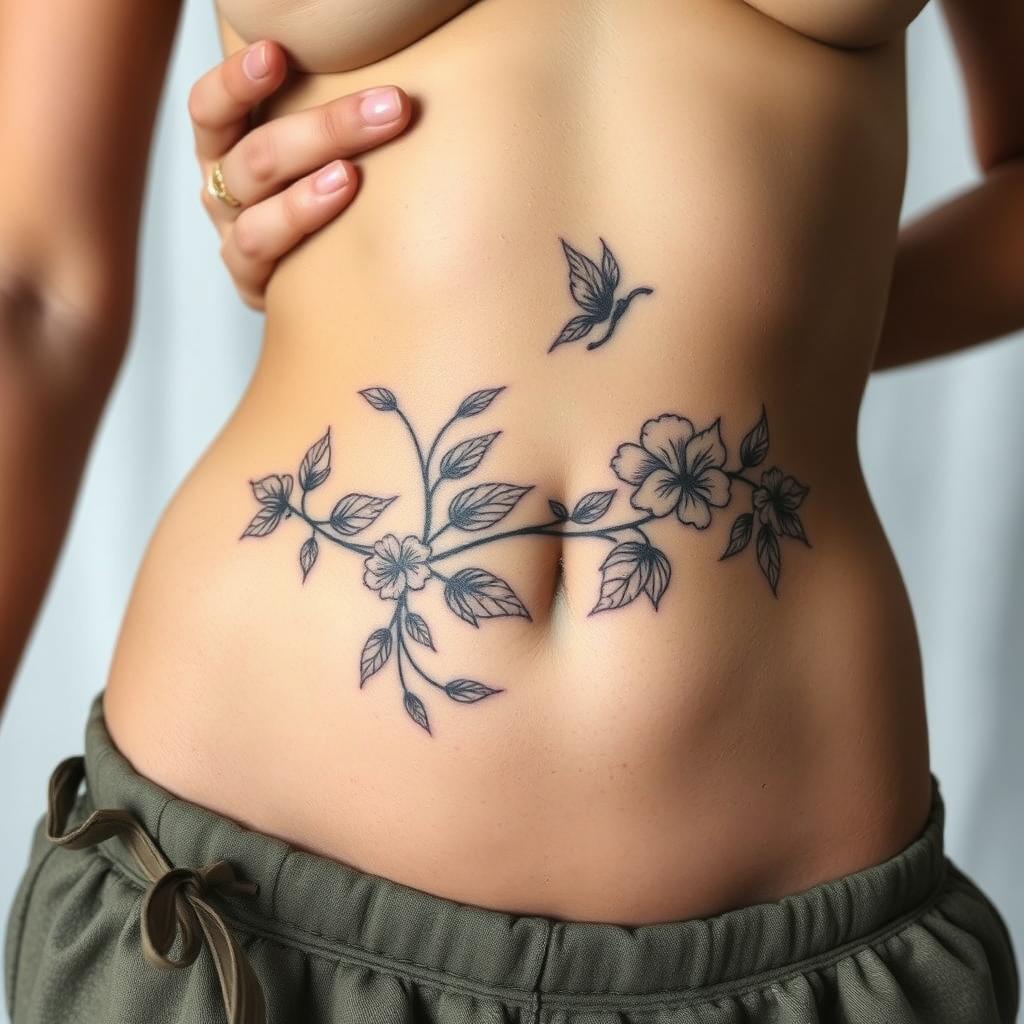
Subtle blends and neutral palettes for minimal visibility
For a low-key look, go for skin-tone camouflage and soft colors. Tiny designs in neutral tones along the scar help it blend in. These are great for hiding scars if you want something subtle.
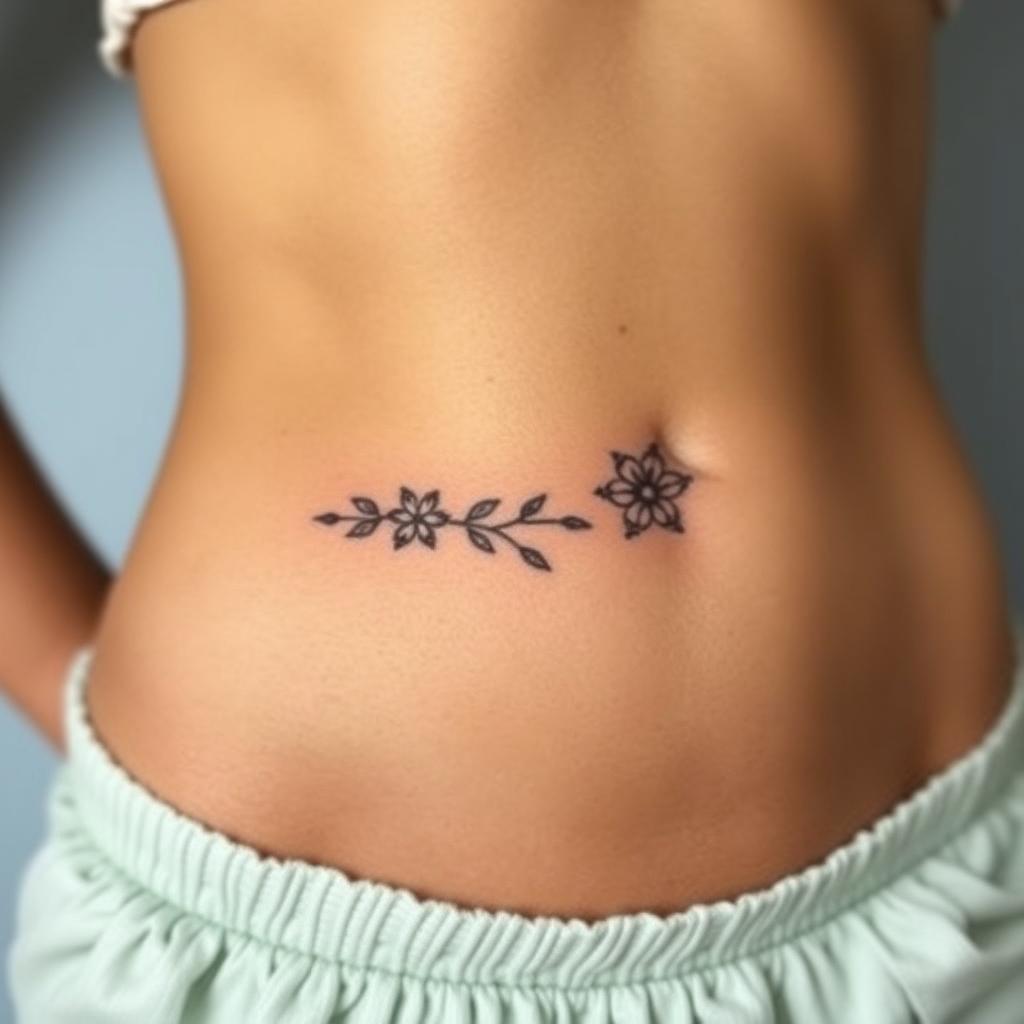
Floral, geometric, and organic patterns that conceal linear scars
Floral tattoos on the side of your stomach and cherry blossom designs on your ribs are great for linear scars. Butterfly tattoos and small black-and-white designs can hide short scars with their shapes. Geometric patterns can also break up a line, making them popular choices.
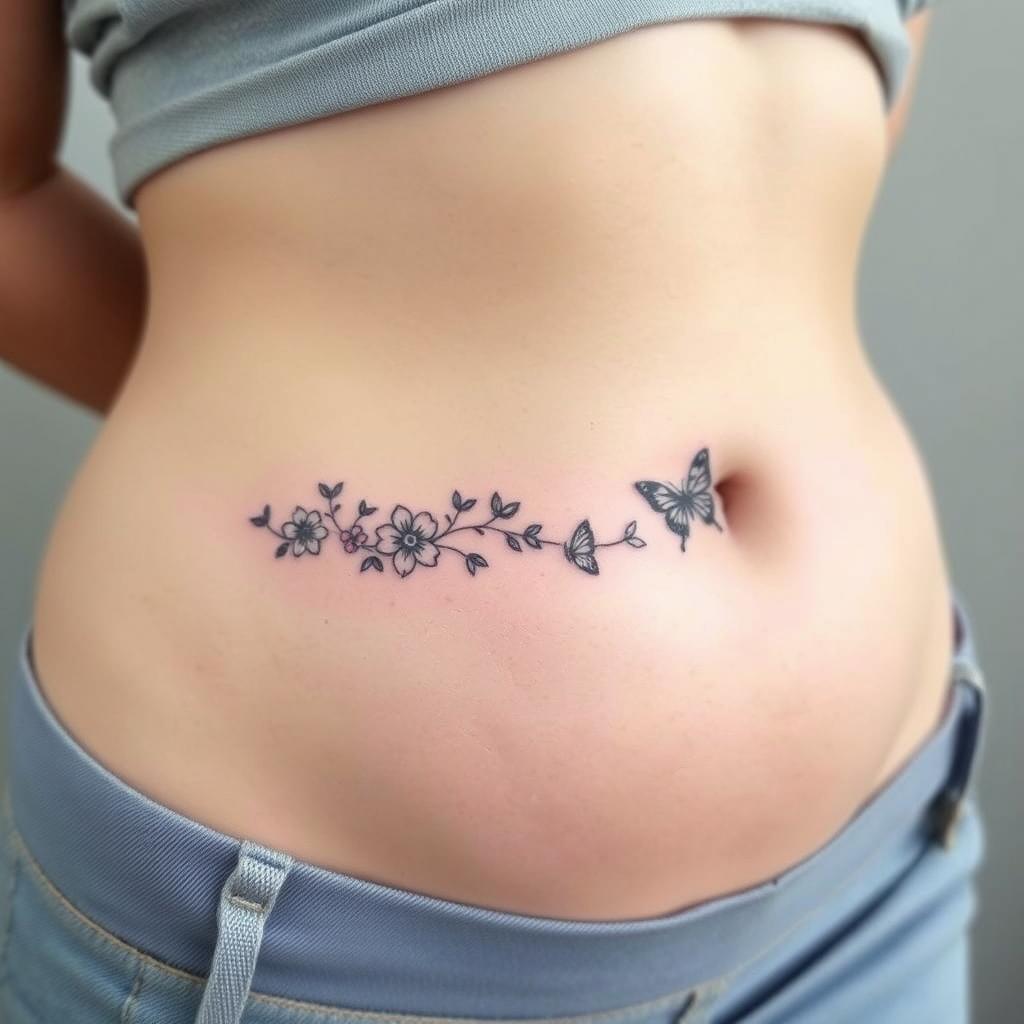
Full-abdomen and side-wrap designs for larger or extended scars
For longer scars from tummy tucks or panniculectomies, full-stomach tattoos and waist/hip wraps are good. They spread the ink over healthy skin, avoiding heavy focus on the scar.
Try temporary designs first to see how they’ll look before getting a permanent tattoo.
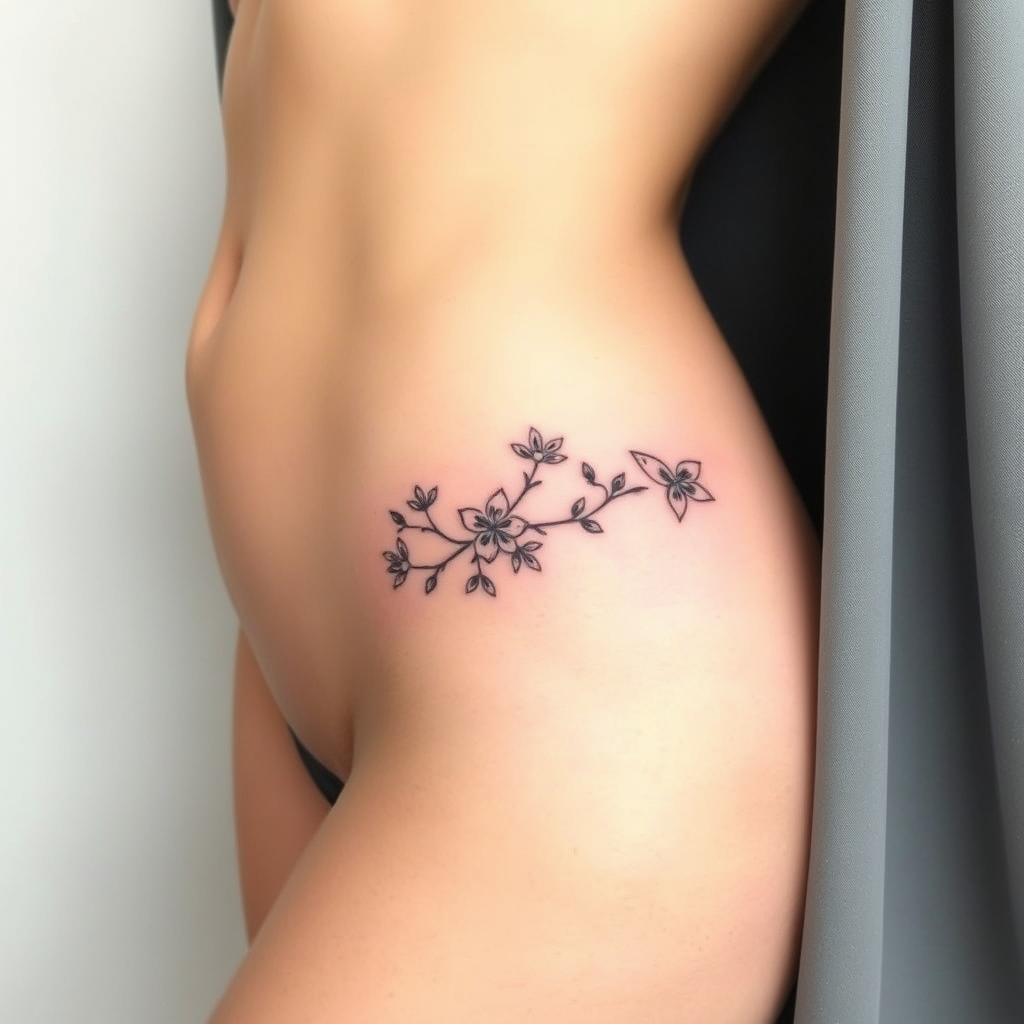
Start with these ideas when talking to a tattoo artist. Choose designs that fit your scar and your style. This way, you can find the perfect tattoo that hides your scars while showing off your personal style.
Cover up tattoos for abdominoplasty scars: choosing what works
Choosing the right tattoo starts with looking at your scar. How old it is matters a lot. It should be at least two years old, not red, and feel stable before getting a tattoo.

Look at the size, color, and feel of your scar. Small, light scars blend well with skin color. But, thick or raised scars might need special care or a design that hides texture.
Assessing scar size, color, and texture before picking a design
Compare your scar’s color to your skin in natural light. If it’s very different, camouflage ink can help. Uneven texture? A design that breaks the line is better than blending.
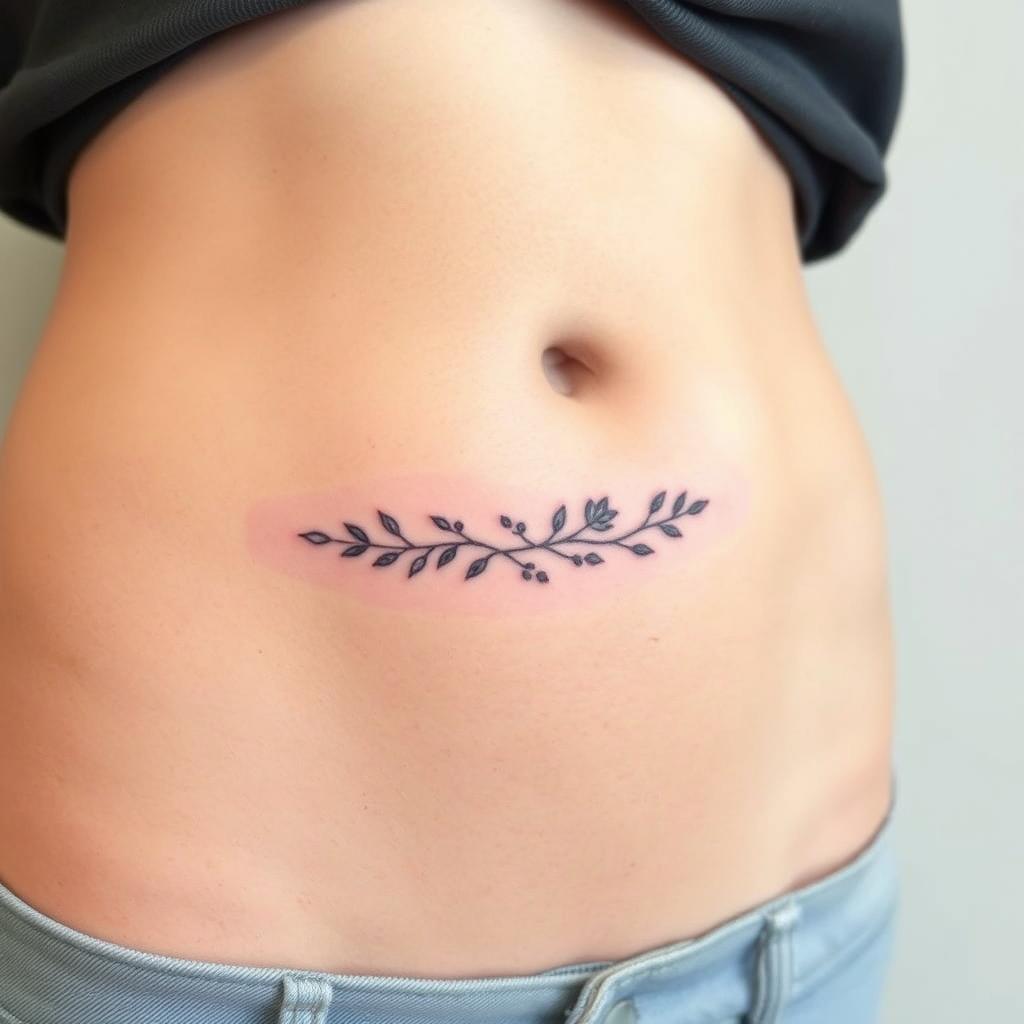
Matching design placement to typical tummy tuck scar location
Tummy tuck scars are usually low on the belly. Designs that follow this line, like low-stomach flowers or waistbands, hide the scar well. They also respect your body’s shape.
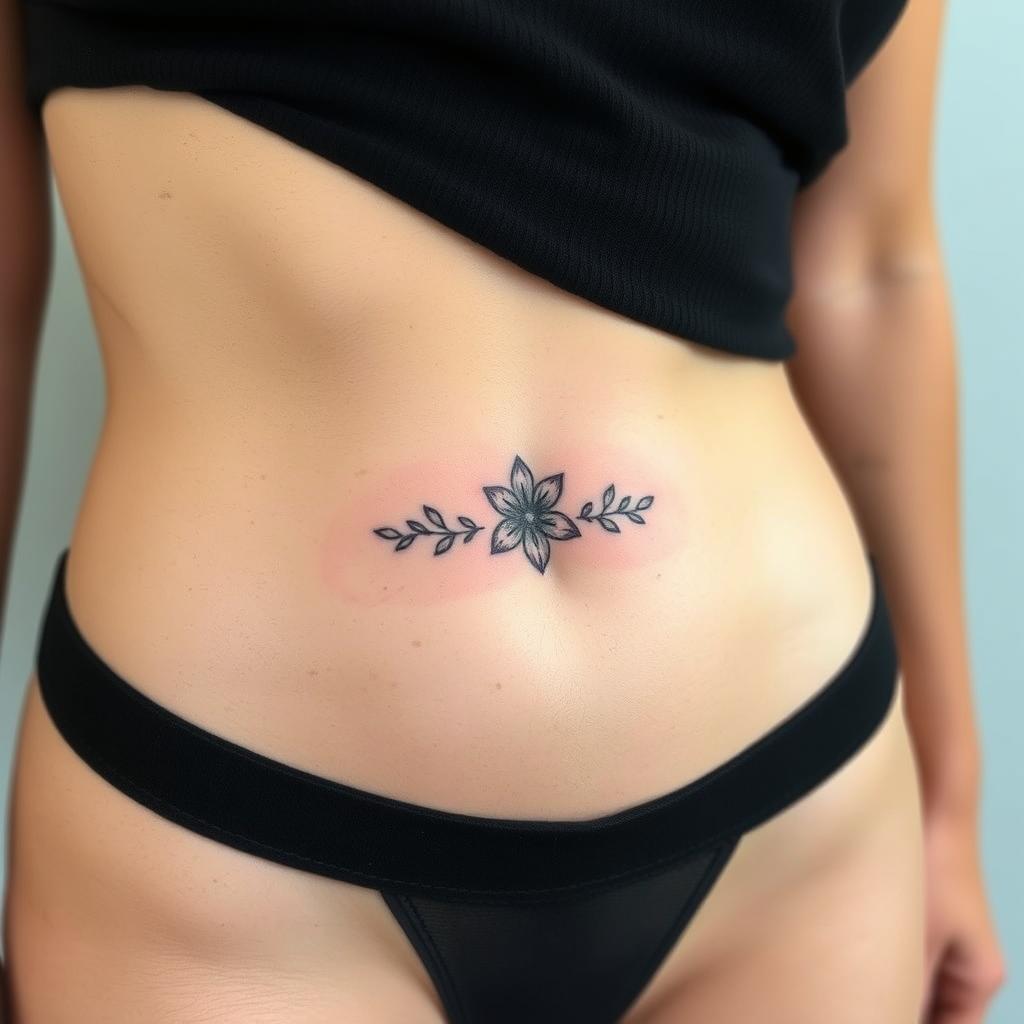
For vertical or longer scars, choose central or full-abdomen designs. Let your body shape guide where the design starts and ends. This makes the tattoo look like art, not a patch.
Combining camouflage ink with decorative elements
Many artists blend camouflage and decorative tattoos. They use skin-tone ink inside the scar to reduce contrast. Then, they add decorative parts to cover any line left.
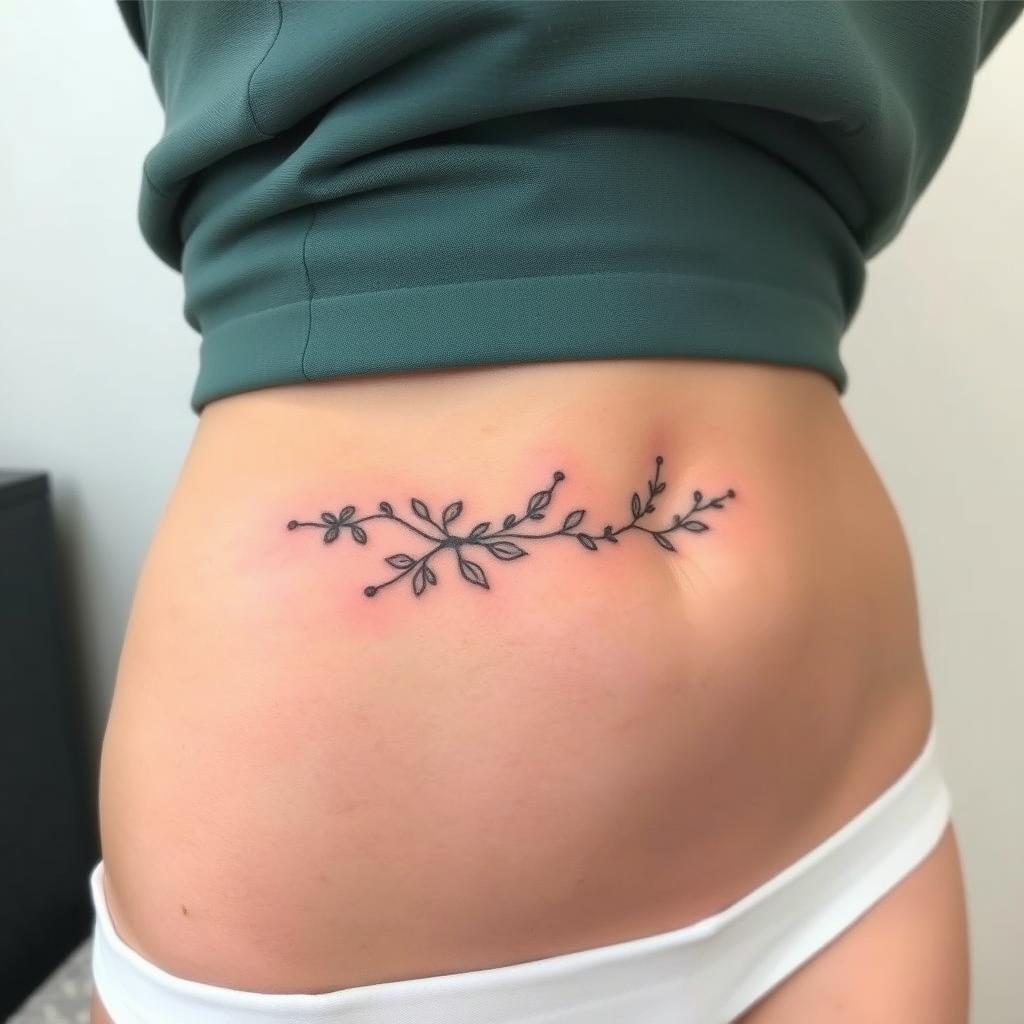
This mix is great for hiding scars and looking good. Talk to artists who know about medical and decorative tattoos. They can create a design just for you.
When can you get a tattoo after a tummy tuck
Thinking about tattoos after a tummy tuck takes time. Your body needs to heal first. Tattoos too soon can mess up the healing and look.
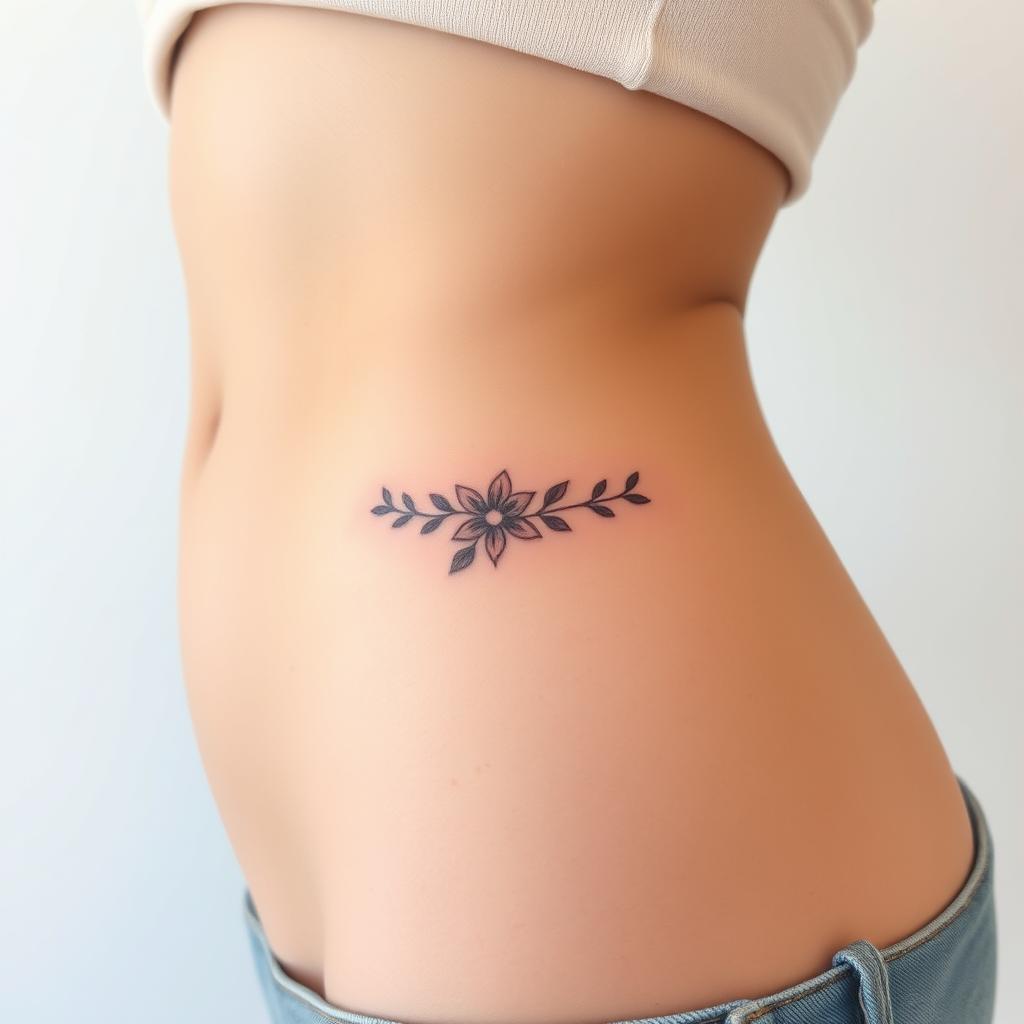
Recommended healing time before tattooing scar tissue
Experts say wait at least two years for tattoos on scars. Scars usually stop changing by then. This makes sure your tattoo looks good for a long time.
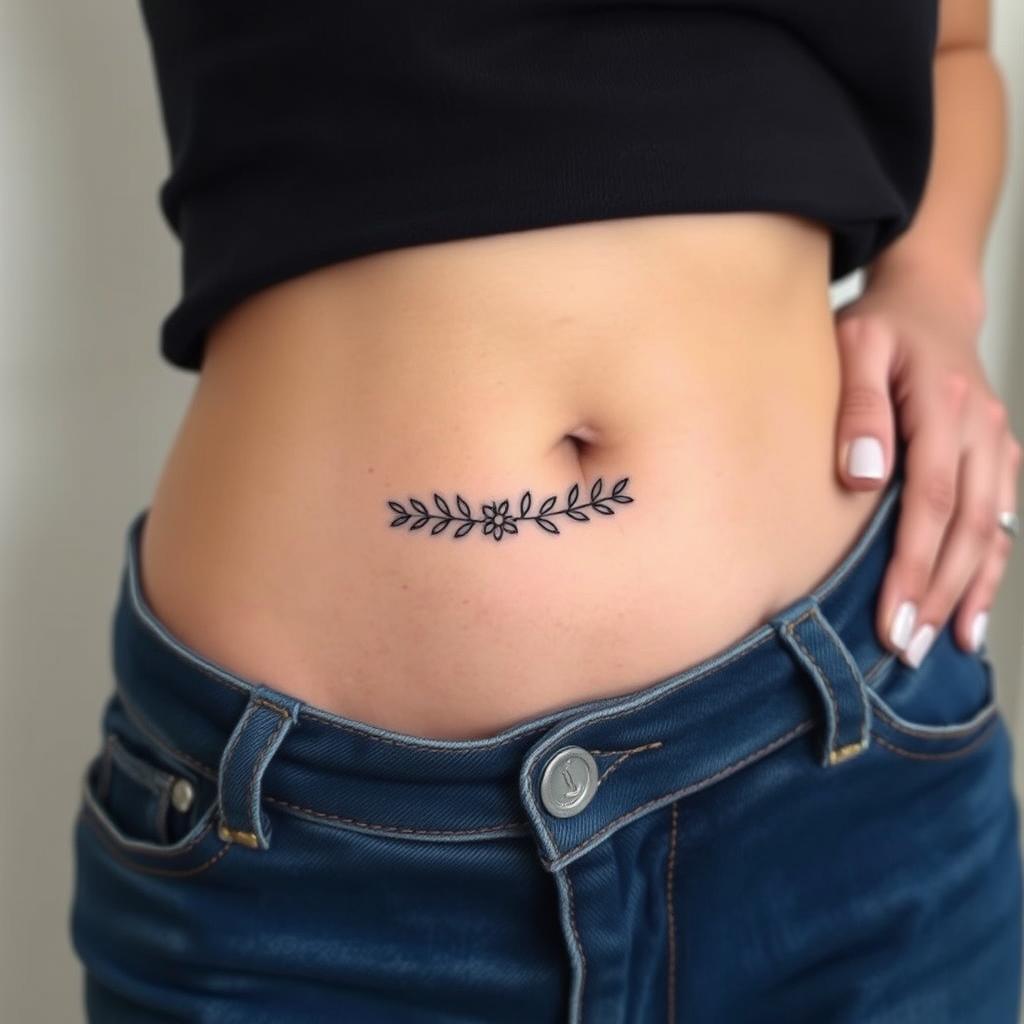
Signs your scar is mature enough for camouflage tattooing
Check if the scar is pale or white. It should not be red or inflamed. If the scar stays the same during activity, it’s ready for tattoos.
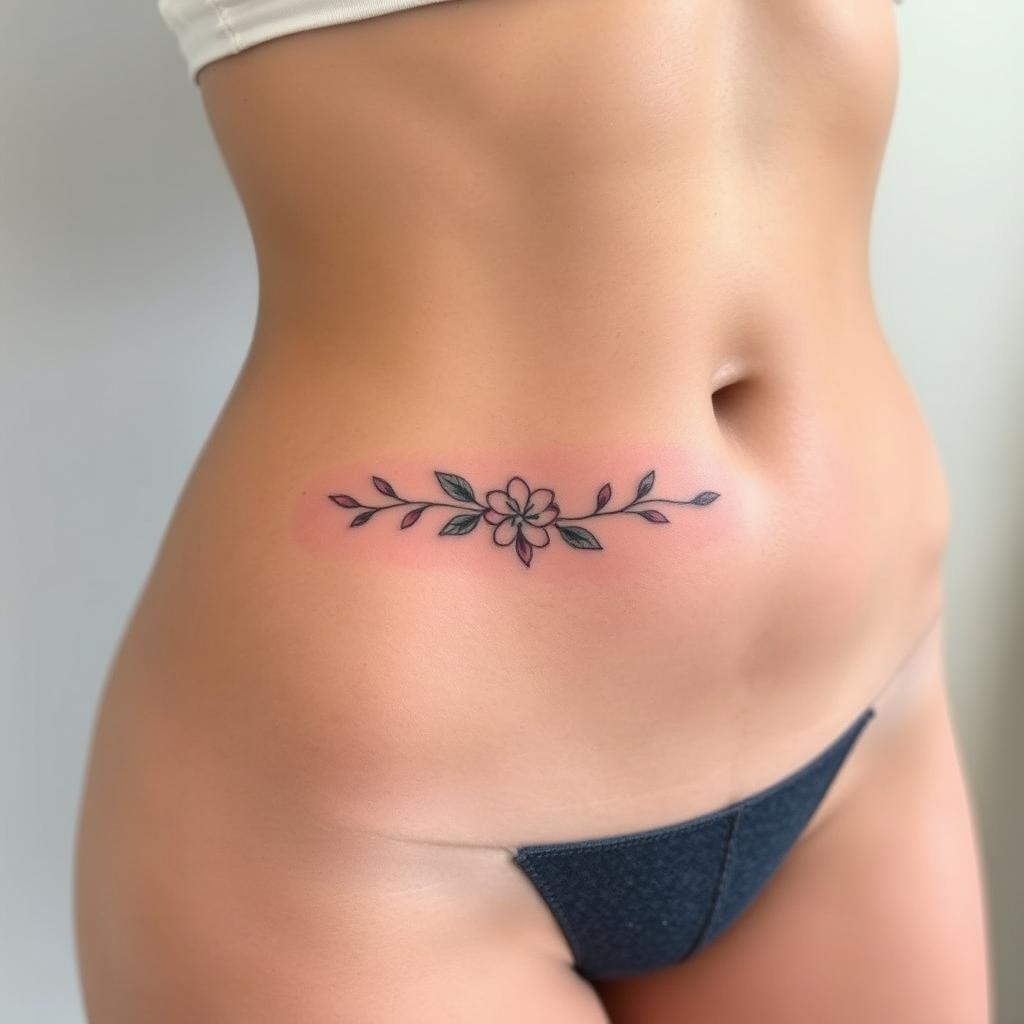
Why waiting reduces risk of distortion and infection
Waiting helps avoid swelling that can mess up your tattoo. Tattoos too soon can cause infections. Talk to your surgeon before getting a tattoo.
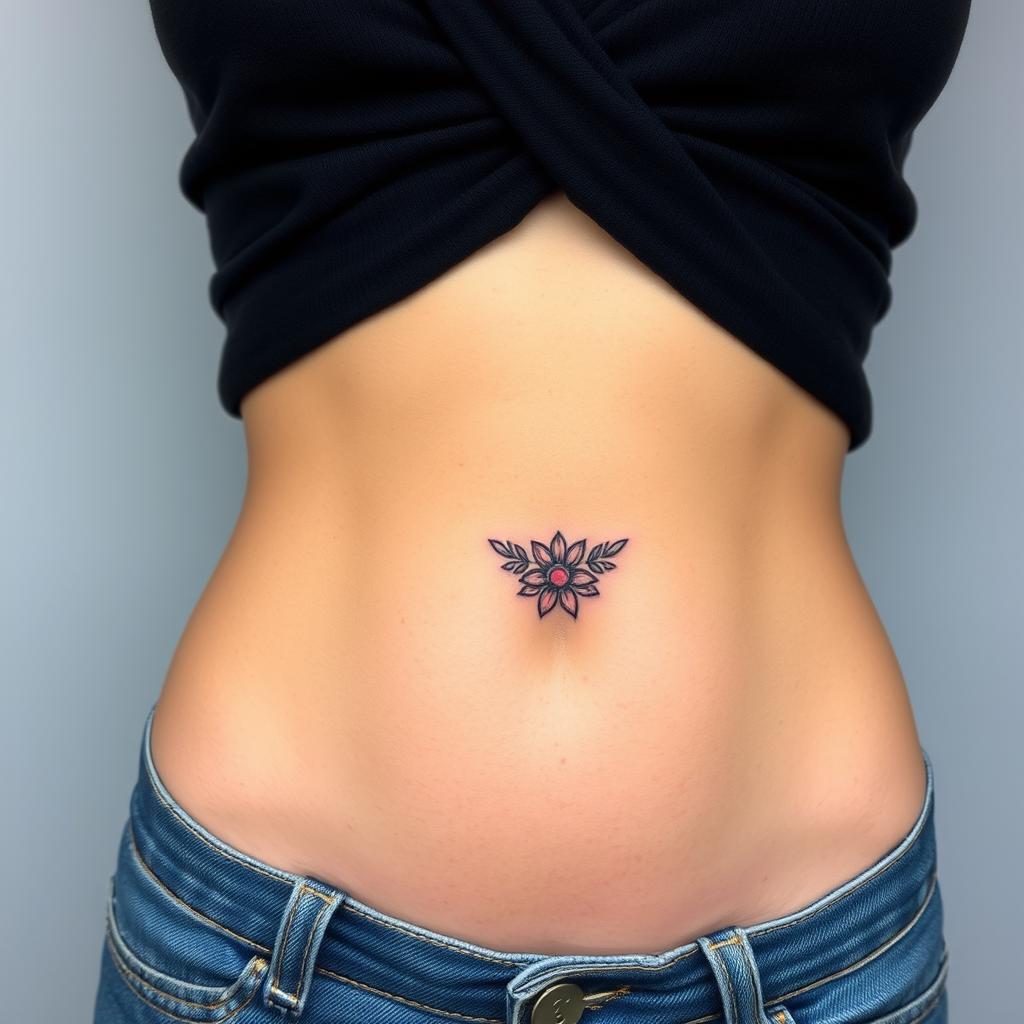
Try temporary tattoos while you wait. They let you test designs without harming your scar.
How the tummy tuck scar tattoo procedure works
You’ll start with a brief intro that explains the whole process. You’ll learn about the steps, timeline, and how to pick the right design for your skin and scar.
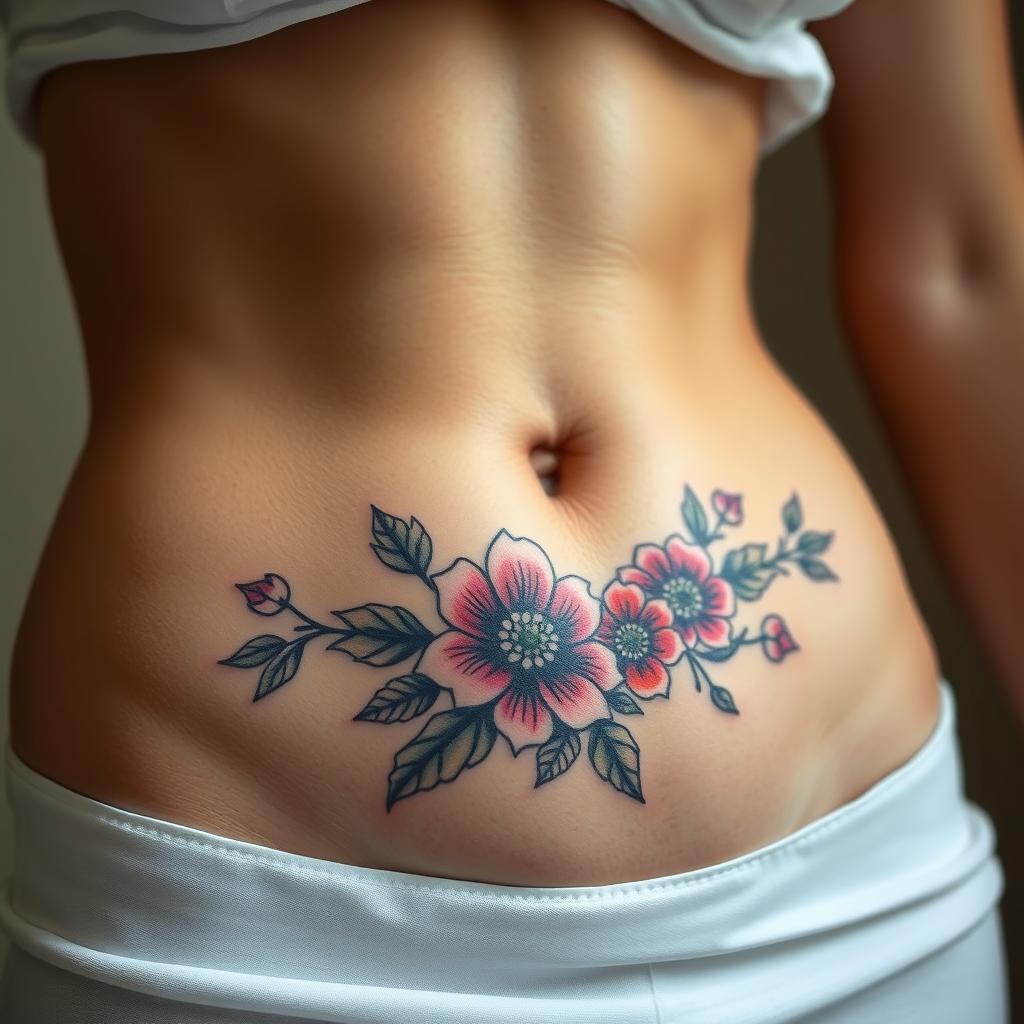
Consultation and scar assessment: what the artist needs to know
Your first visit is often free and can be in person or online. The artist will look at your scar’s age, color, and texture. They’ll also ask about your surgery and see pictures of your scar.
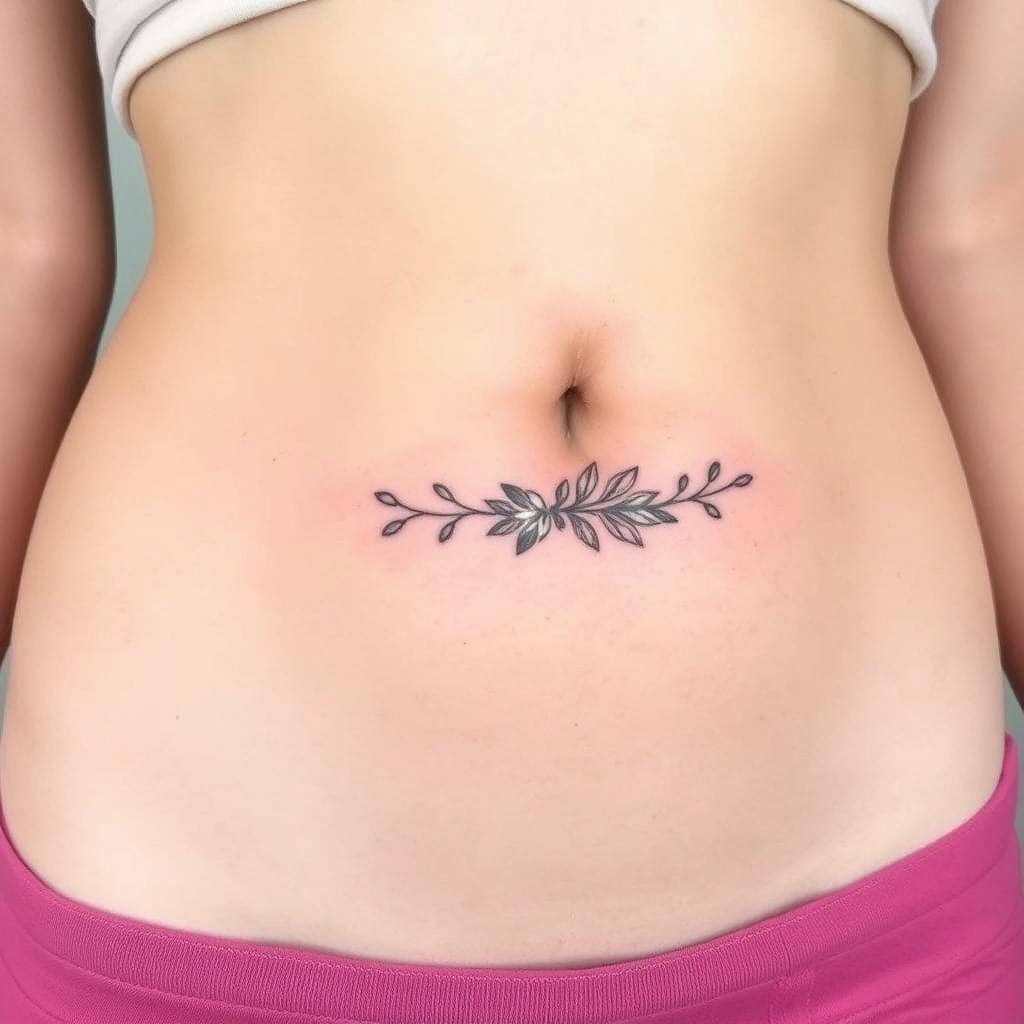
Color matching and custom ink blending for camouflage tattoos
Color matching is a key step. Artists mix different pigments to match your skin. They might use several blends to get the right look. You’ll see test colors and talk about how sun and skin type can change them.
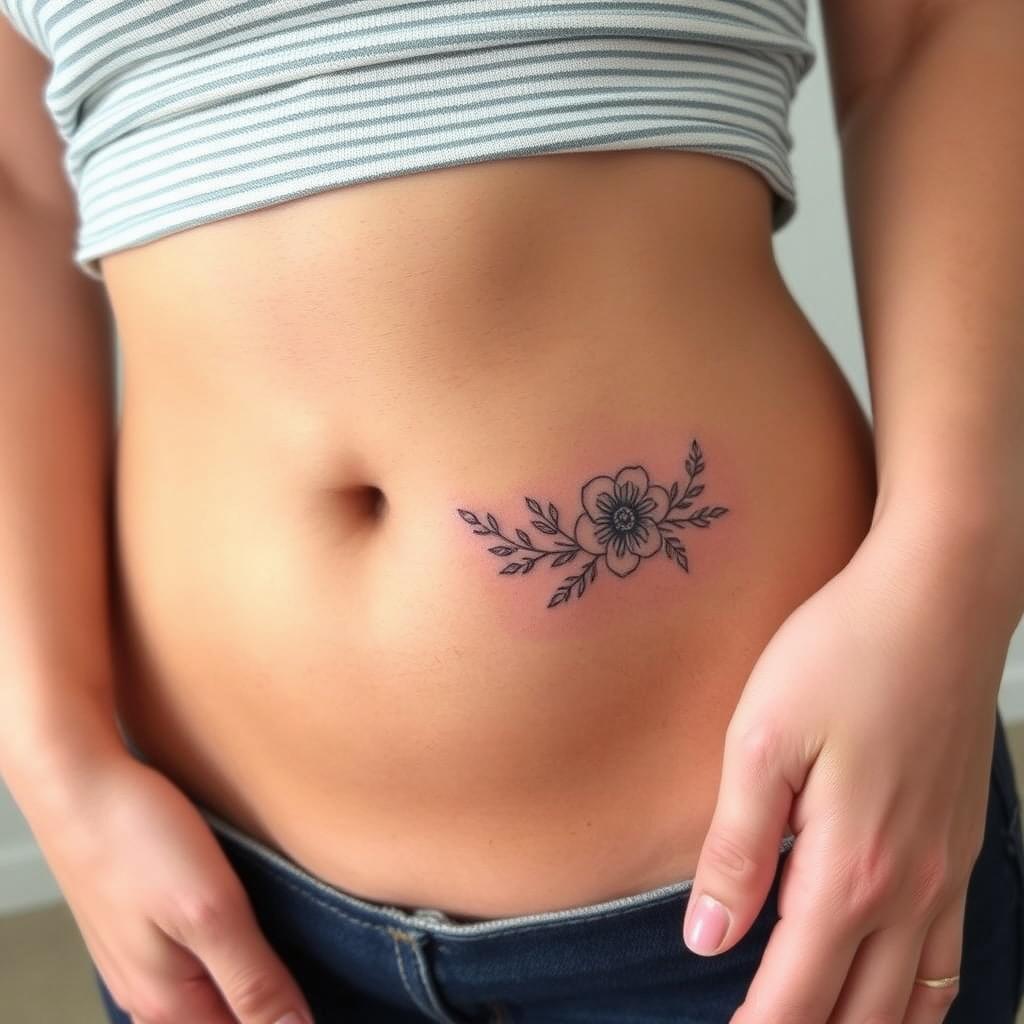
Typical session length, touch-ups, and expected longevity
Most small scar sessions last under an hour. Bigger scars or complex designs might take longer. You’ll need a touch-up in six to twelve weeks to get it just right. The tattoo can last five to six years, depending on sun and skin.
Practical steps you’ll experience on procedure day
On the day, your skin is cleaned and prepped. The artist will map out the design and check the colors with you. They’ll tattoo carefully to avoid hurting the scar tissue.
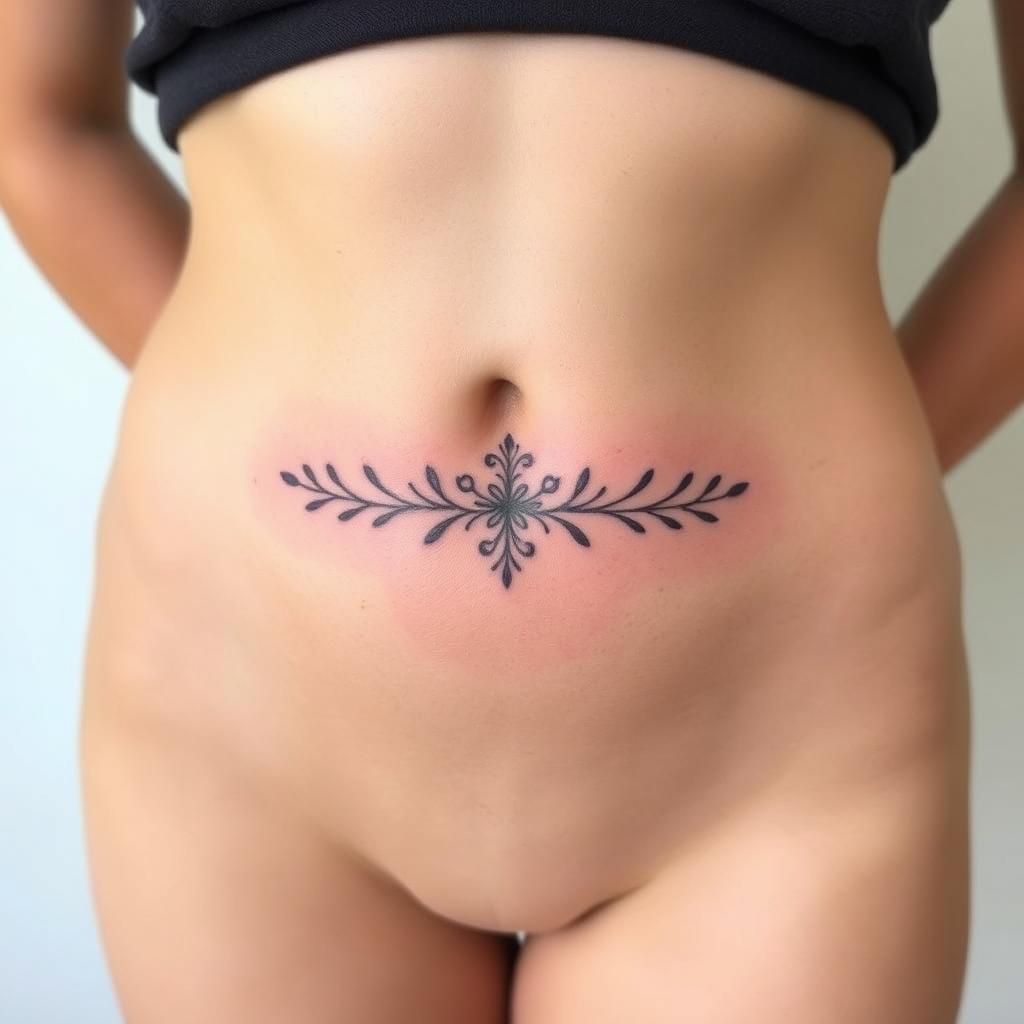
Prototyping and temporary trials
You can try out designs with a temporary tattoo. Apply it to clean skin, wet the back, and remove after a few seconds. This helps you choose the right design before it’s permanent.
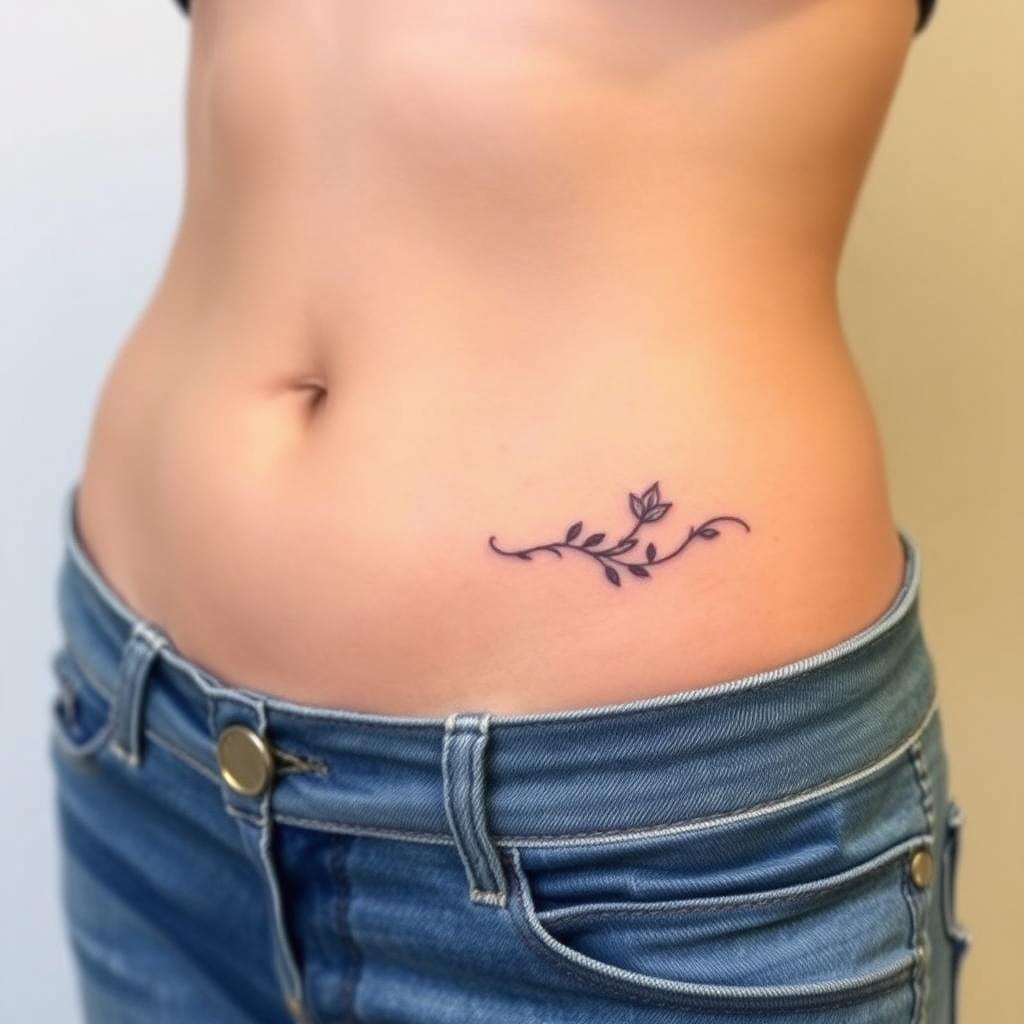
Aftercare expectations and maintenance realities
Aftercare includes gentle cleaning and avoiding the sun. You’ll know when to come back for touch-ups and how often. The artist will talk about how long it will last and what can make it fade faster.
Pain, prep, and aftercare for tummy tuck scar tattoos
Getting a tattoo over an abdominal scar needs clear expectations. You will learn what the procedure feels like. Also, how to prep skin for the best color match and protect pigment while healing. This guide covers pain, prep, aftercare, and healing tips for tummy tuck scar tattoos.
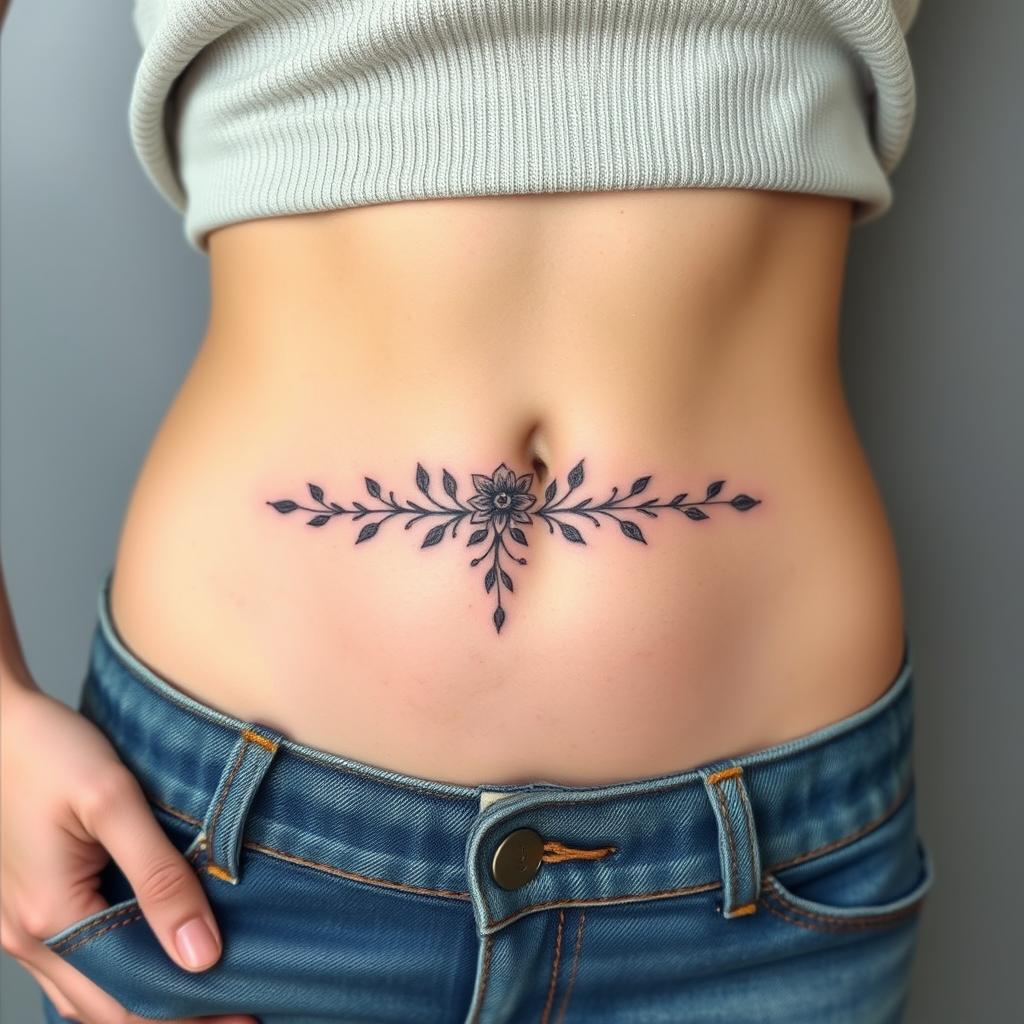
Pain on scar tissue versus normal skin
Scar tissue feels different from unscarred skin. Most clients rate pain for tummy tuck scar tattoos around 4–6 out of 10. Some find scars more painful if they are sensitive or have nerve changes.
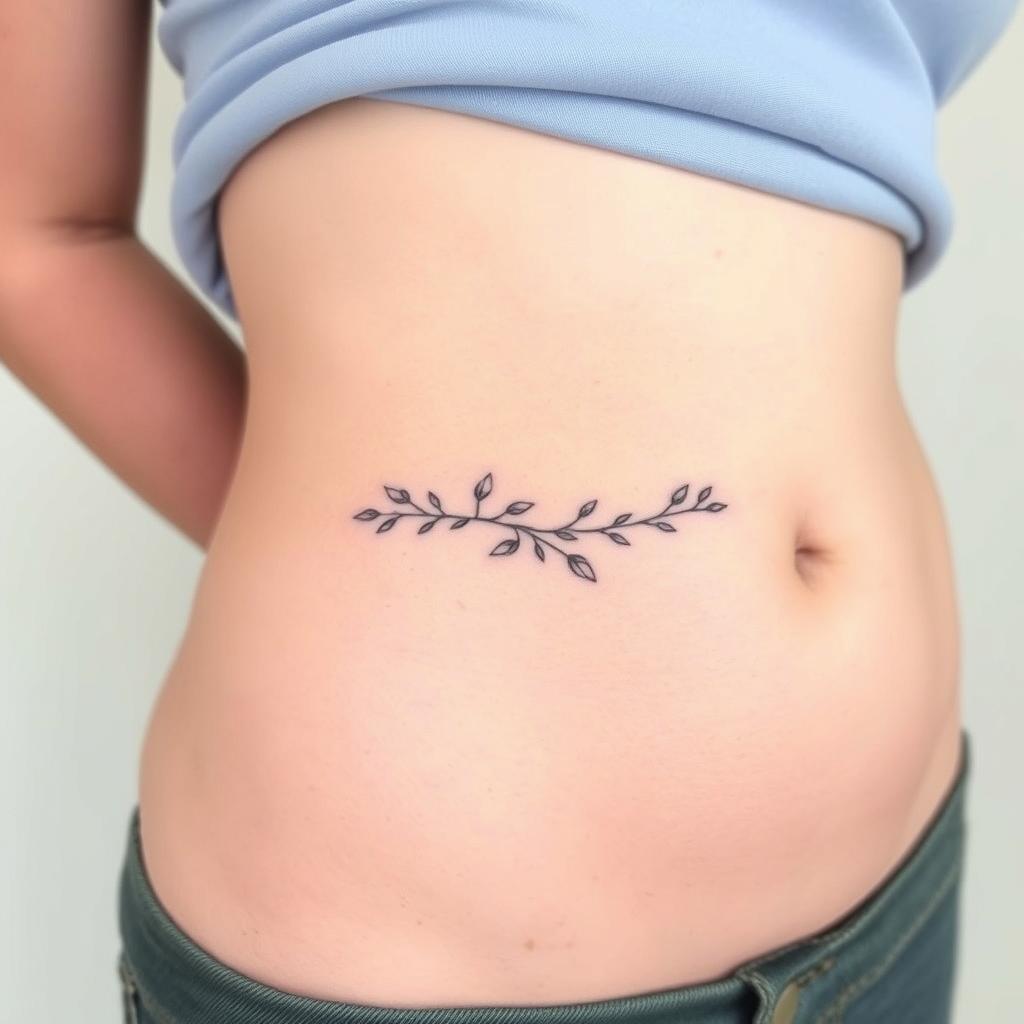
Numbing creams might not be the best choice because they can affect pigment uptake. Ask your artist for comfort options.
Preparing your skin before the session
For a precise color match, avoid tanning before your tattoo. Tanned skin hides your true tone and makes blending harder. Stay hydrated and use a gentle moisturizer before your appointment.
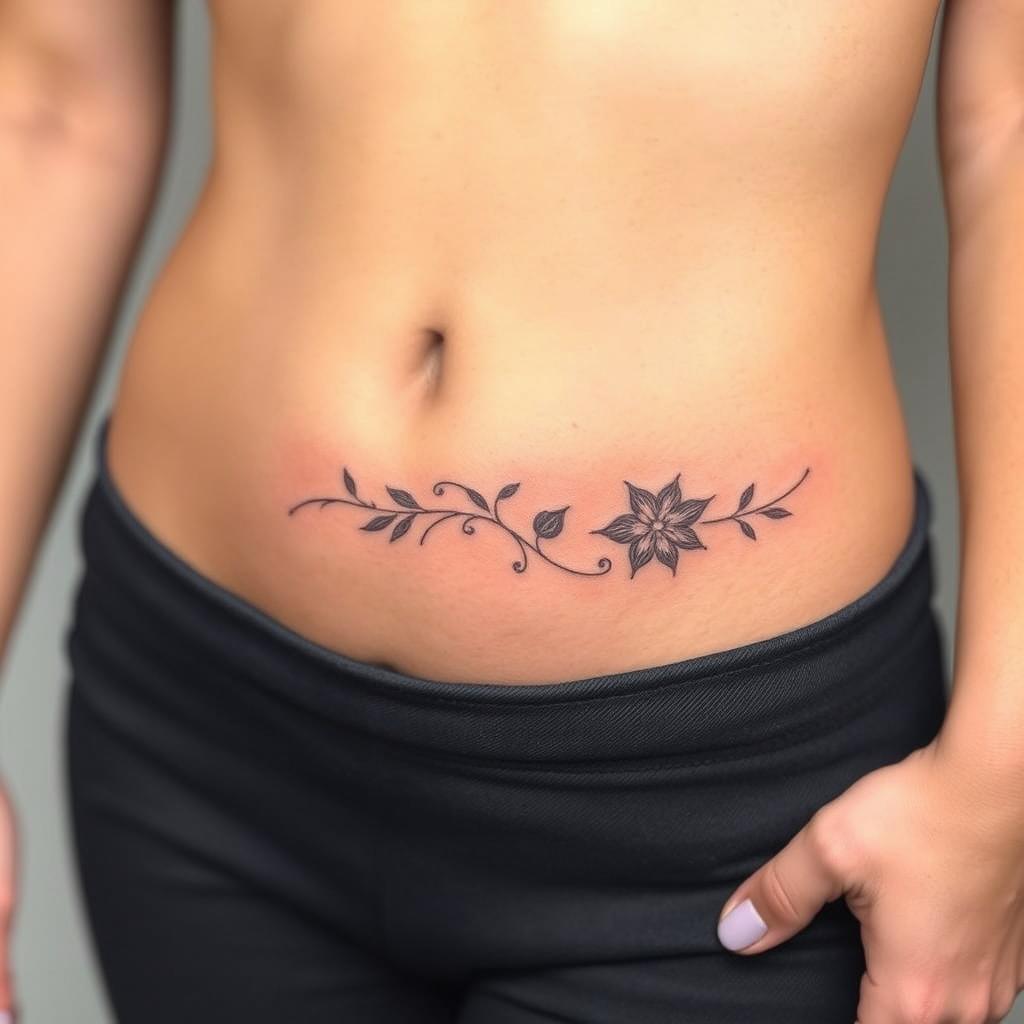
If you plan to test a temporary design, apply it to dry, oil-free skin. This lets the artist see placement and color.
Immediate aftercare steps
Aftercare for tummy tuck scar tattoos focuses on cleanliness and sun protection. Gently clean the area with mild soap and water, pat dry, and use the ointment your artist recommends. Avoid soaking in baths or pools while the tattoo forms a scab.
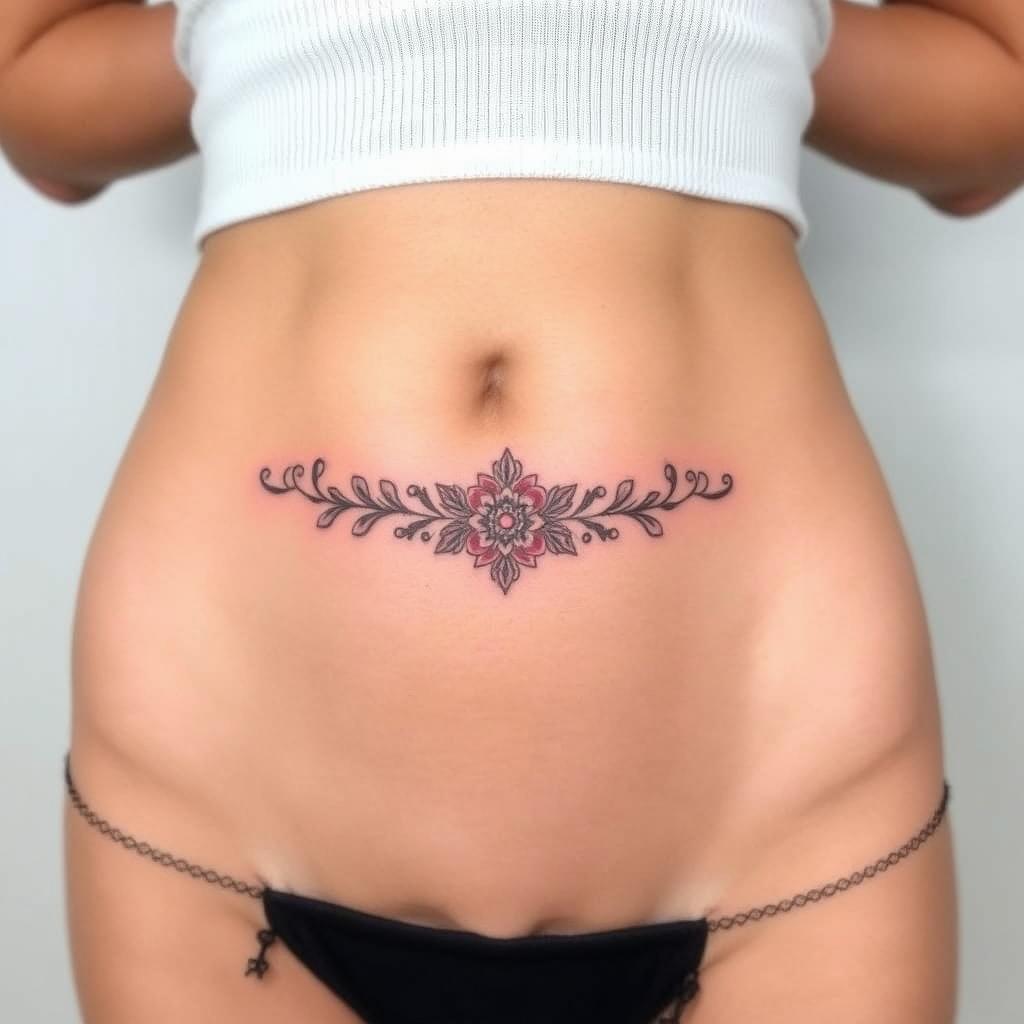
Limit sun exposure to prevent fading and pigment shift during the early weeks.
Ongoing care and touch-ups
Healing tattoos for tummy tuck scars can take several weeks to show stable color. Keep applying sunscreen once the skin is fully healed. Expect a touch-up session to refine blending.
If you notice unusual swelling, persistent redness, or signs of infection, contact your artist or your surgeon right away.
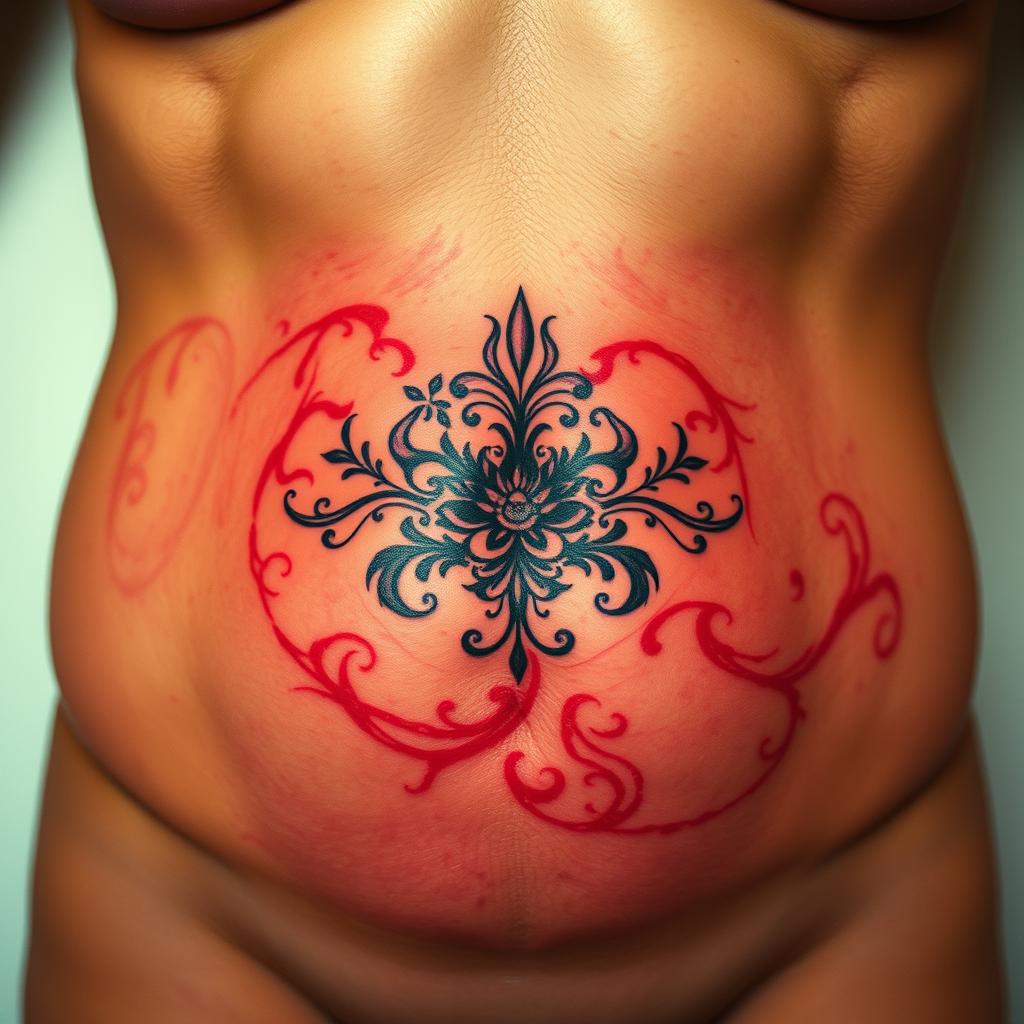
Healing tattoos for tummy tuck scars and expected results
Getting a tattoo over your tummy tuck scar takes time. You’ll learn how scar tissue takes ink, what healing looks like, and how colors change.

How scar tissue accepts pigment
Scar tissue acts differently than regular skin. It might not take ink evenly. Artists use layers and mix colors to get depth.
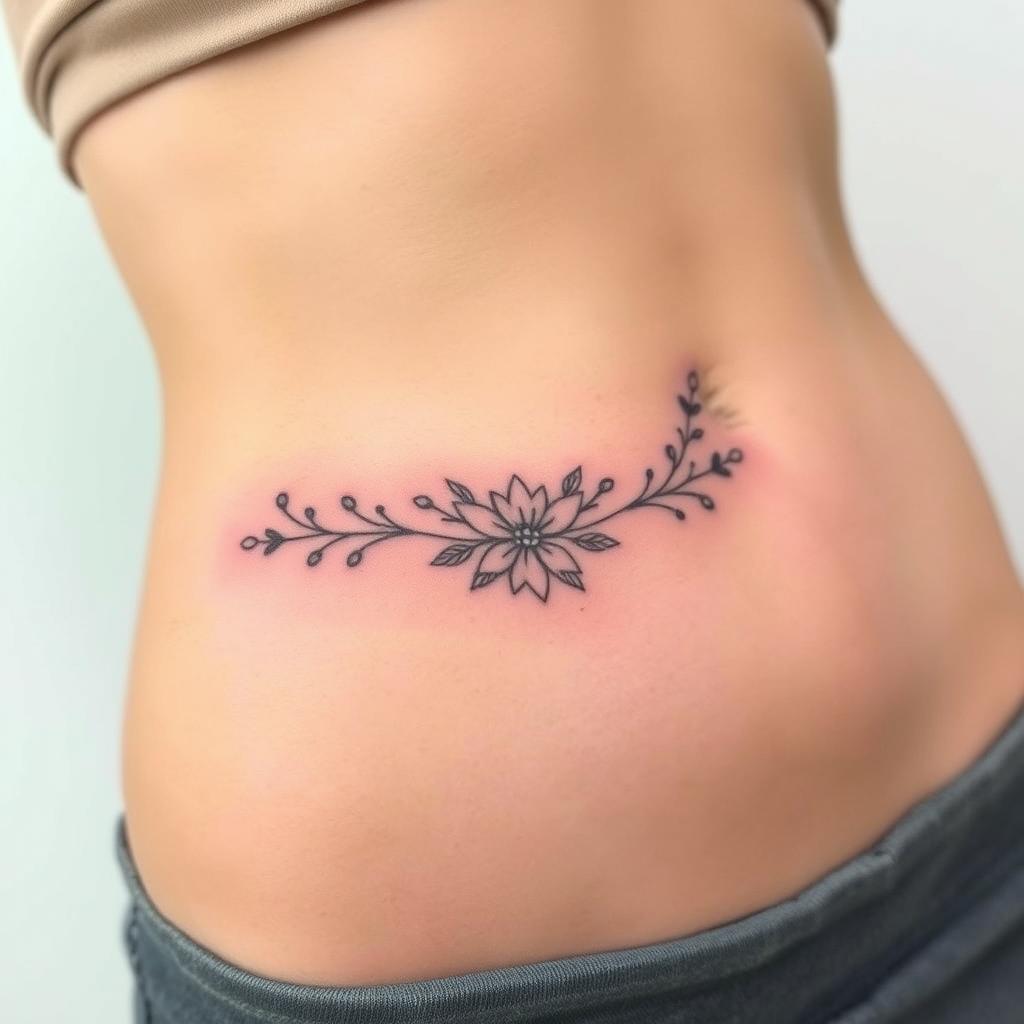
Color shifts in scar camouflage
Colors in scar tattoos can change. Over time, they might get warmer or cooler. Artists pick colors that work well together.
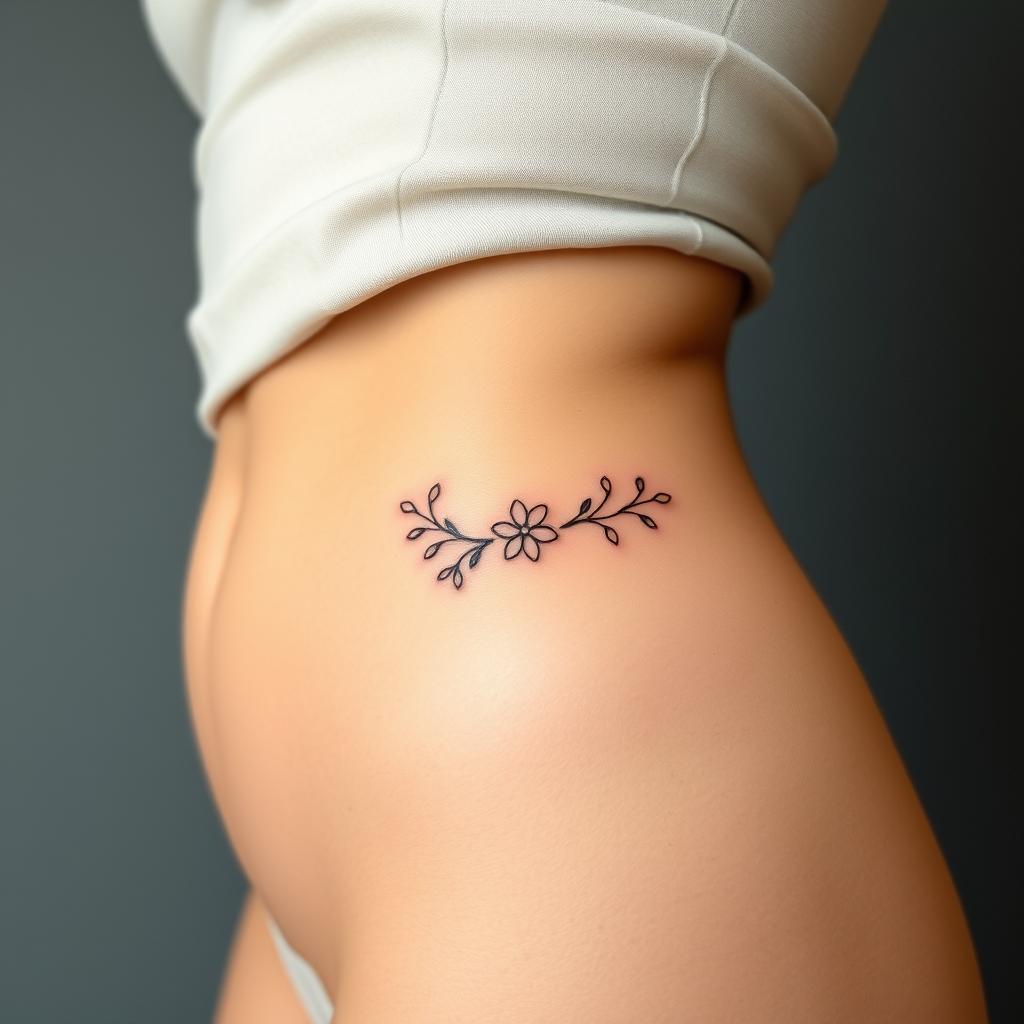
Realistic timelines for initial healing
Healing on the surface takes 1–2 weeks. You’ll see scabs and peeling. But, full healing takes months to see the final look.
Final appearance and patience
The final look takes 3 to 6 months. Temporary tattoos can give you a sneak peek. They heal faster.
When additional sessions are needed
More sessions might be needed for blending and color. Many get touch-ups after healing. Talk to your artist about future work.
Tummy tuck recovery tattoos: what to expect
During recovery, care for your tattoo gently. Protect it from the sun. Be patient and follow your artist’s advice for the best results.
Risks and limitations of tattooing over tummy tuck scars
Getting a tattoo over a tummy tuck scar can change how you feel about your body. But, you should know the risks before you commit. Scarred tissue is different from normal skin.
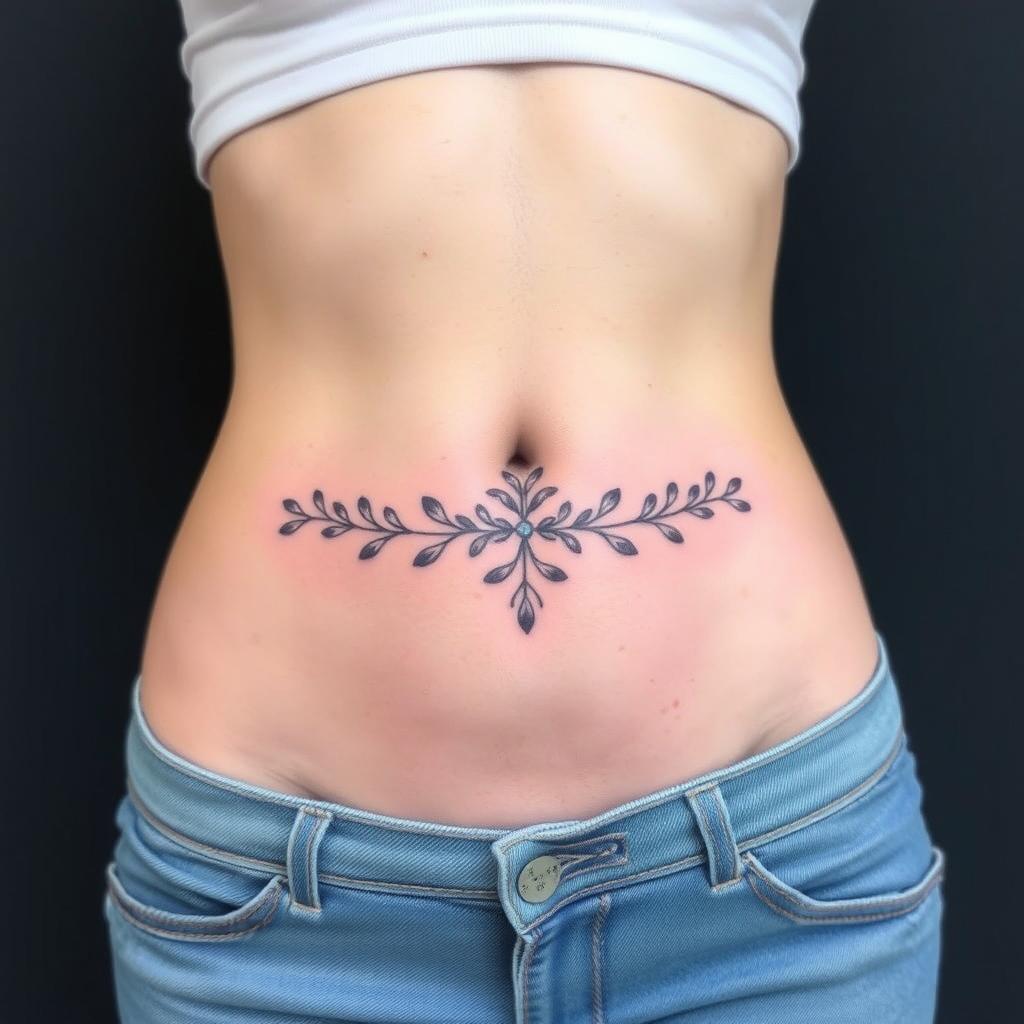
This means results can be uneven, pigments may fade faster, and removal later can be complex and expensive.
Poor results are a real possibility. Uneven pigment uptake, color shifts, and patchy coverage can leave you dissatisfied. Dark, dense inks can draw attention instead of hiding the mark.
So, pick designs and palettes that suit your skin and scar tone. Keep in mind the limitations of scar camouflage tattoos when you plan placement and expectations.
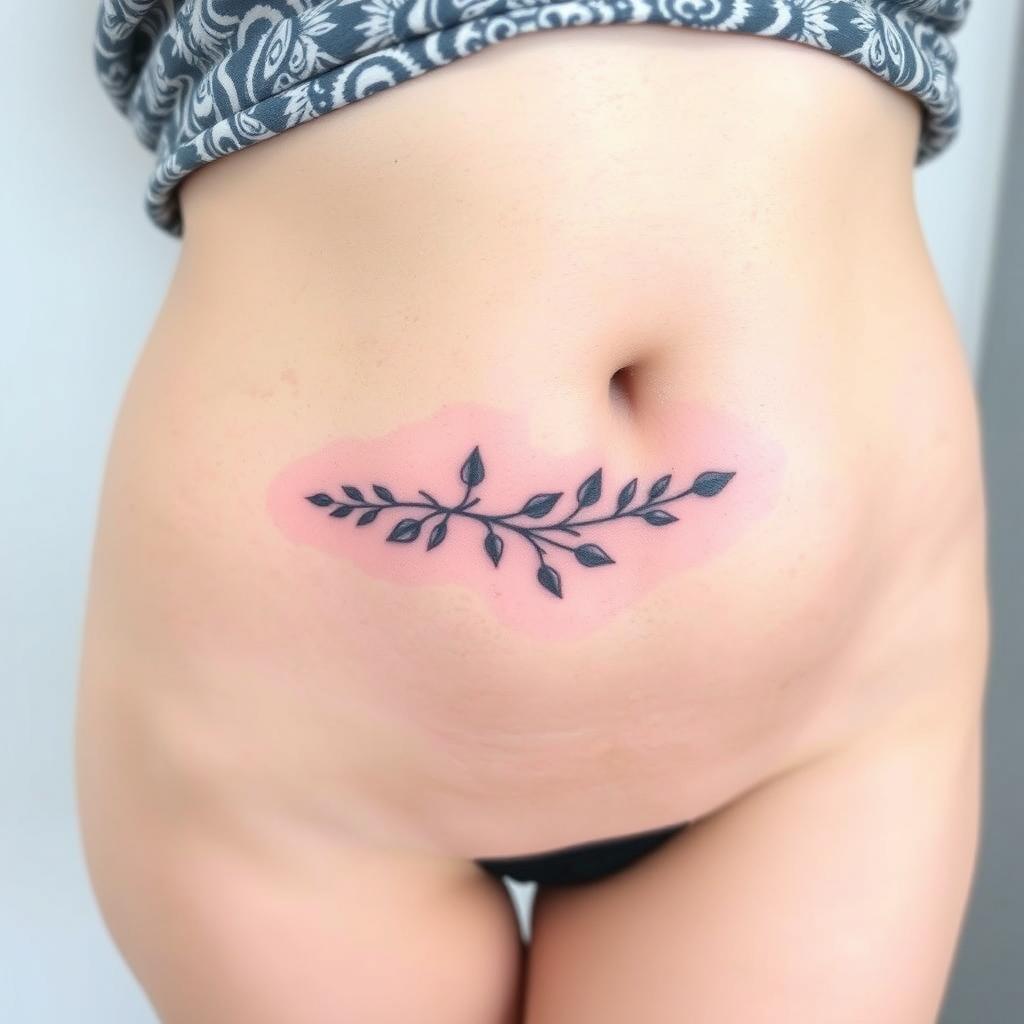
Compromised skin tattooing carries extra challenges. Hypertrophic or keloid scars, sun-damaged areas, and sunken scars often reject pigment or create odd texture. Scar thickness, reduced blood supply, and scar mobility affect how ink settles.
If you already have healed but raised or sensitive scarring, results may be unpredictable.
Think about future removals before you start. Laser tattoo removal costs about $500 per session on average and can take years to finish. Treating a tattoo on scar tissue may worsen the underlying scar.
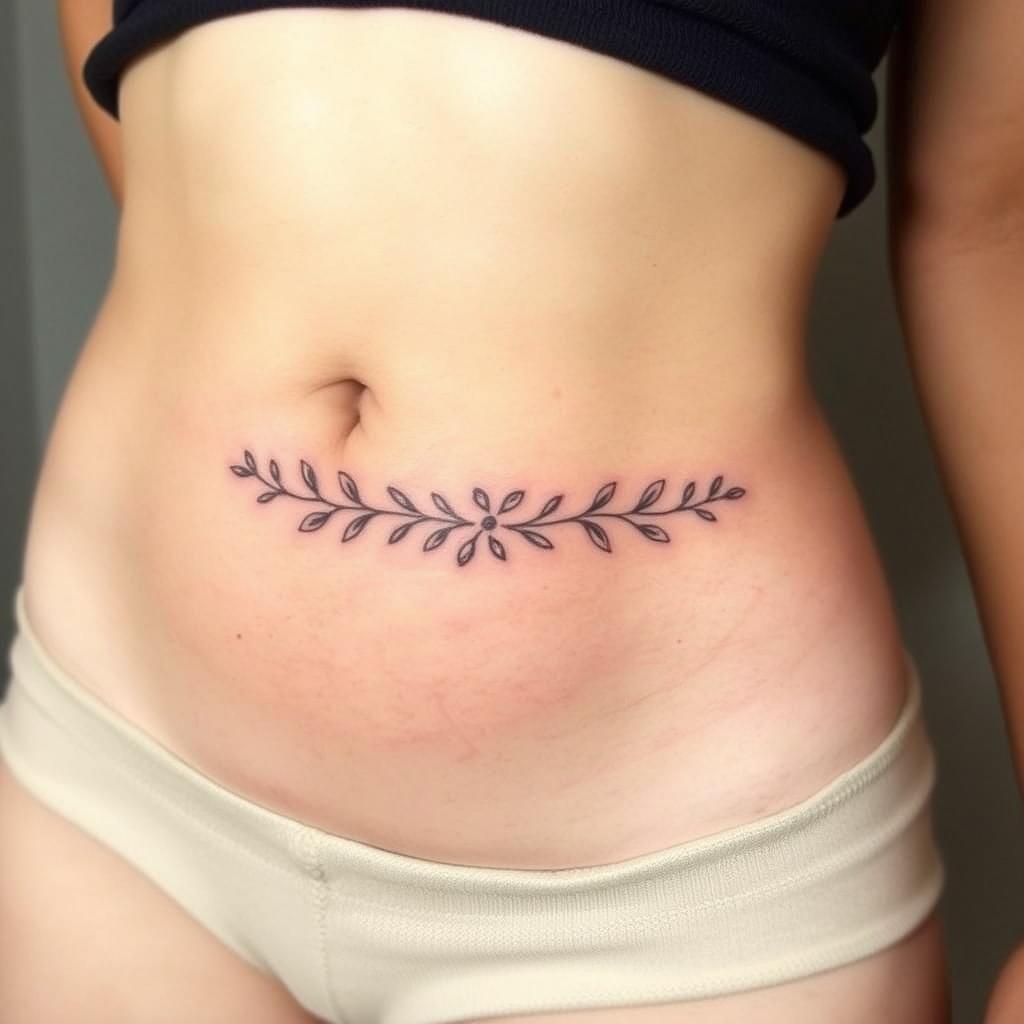
Removal is not a simple fallback, so weigh the long-term consequences carefully.
You should be consulting surgeon for tattoo clearance when there are medical questions. Your plastic surgeon can confirm scar maturity and identify contraindications.
Many artists will ask for written medical clearance if they suspect compromised healing or risk of keloid formation.
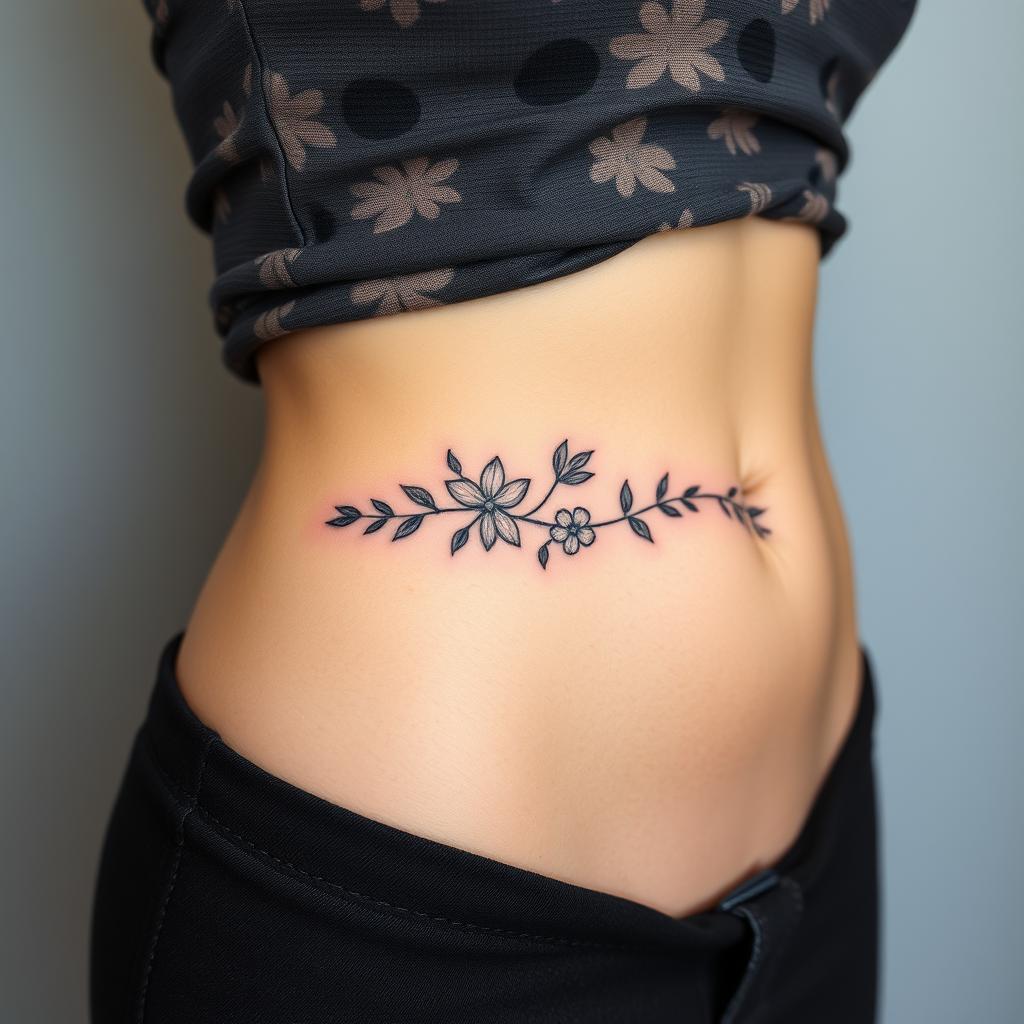
Talk openly with both your surgeon and an experienced tattoo artist who knows scar work. Ask for photos of similar cases, discuss realistic outcomes, and get a plan for touch-ups or alternative treatments.
Understanding the risks of tattooing over tummy tuck scars and the limitations of scar camouflage tattoos helps you make a safer, more confident choice.
Costs and budgeting for tummy tuck scar camouflage tattoos
Start by looking at price ranges and what affects them. Studio Conceal says costs are $500–$2,000 per area. This depends on the artist, scar size, and location.
Many things affect the cost of a tummy tuck scar tattoo. Artist skill, studio reputation, and location matter a lot. A top artist in big cities like Los Angeles or New York will charge more.
Scar size also matters. Bigger scars need more time and often more sessions. This increases the total cost.
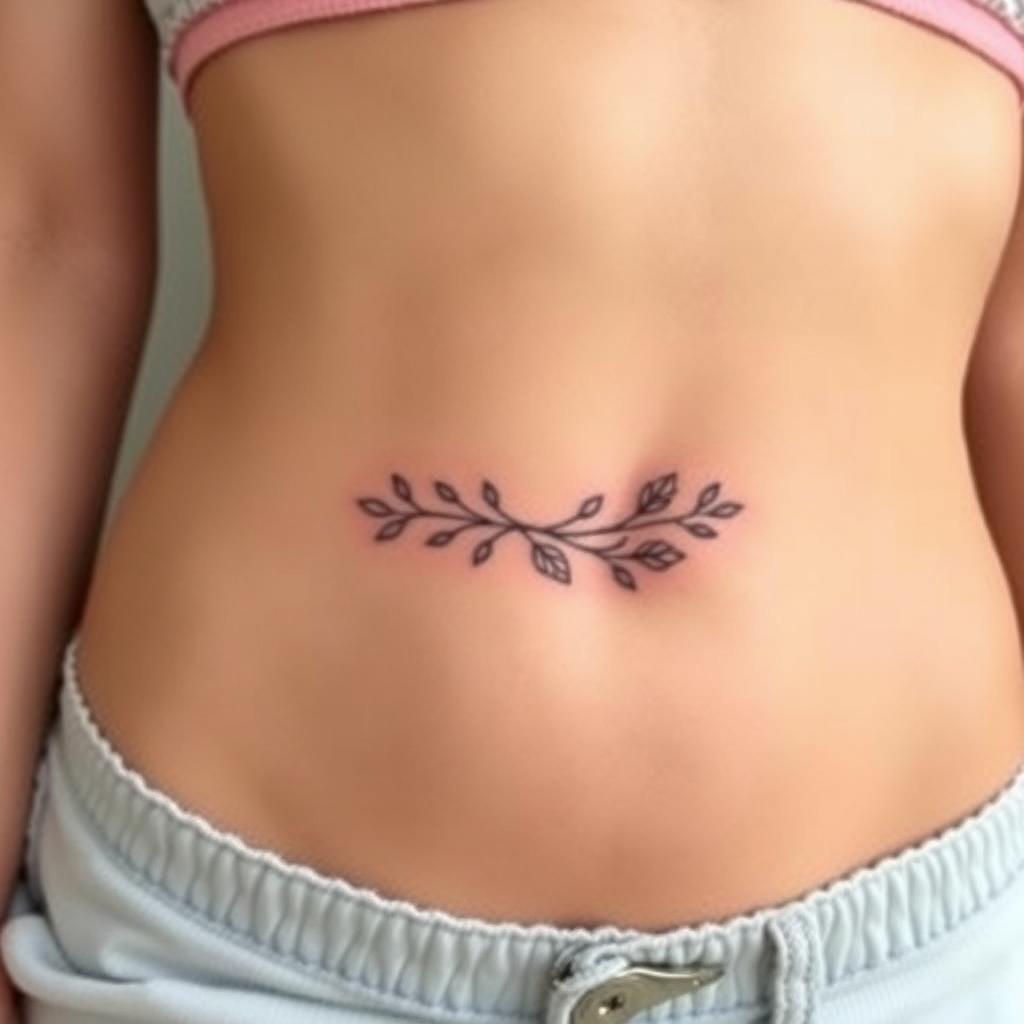
Think about how many sessions you’ll need and touch-up fees. Most tattoos need a follow-up visit. Some artists include this in the first fee. Others charge extra for each session.
Remember to budget for future touch-ups. Pigment can fade, and many people need refreshes every 5–6 years.
When planning, use the term “budget for scar camouflage tattoos.” For cheaper options, expect shorter sessions and simpler designs. For detailed skin-tone matching or big designs, expect to pay more and wait longer.
Consider laser vs tattoo cost. Laser removal costs about $500 per session and may need many sessions. It can also make scars worse, leading to more procedures. Scar revision surgery is more invasive and expensive than tattoos.
To get a total, add the initial tattoo cost, touch-up fees, travel costs, and a little extra for surprises. This gives you a clear picture of costs now and later.
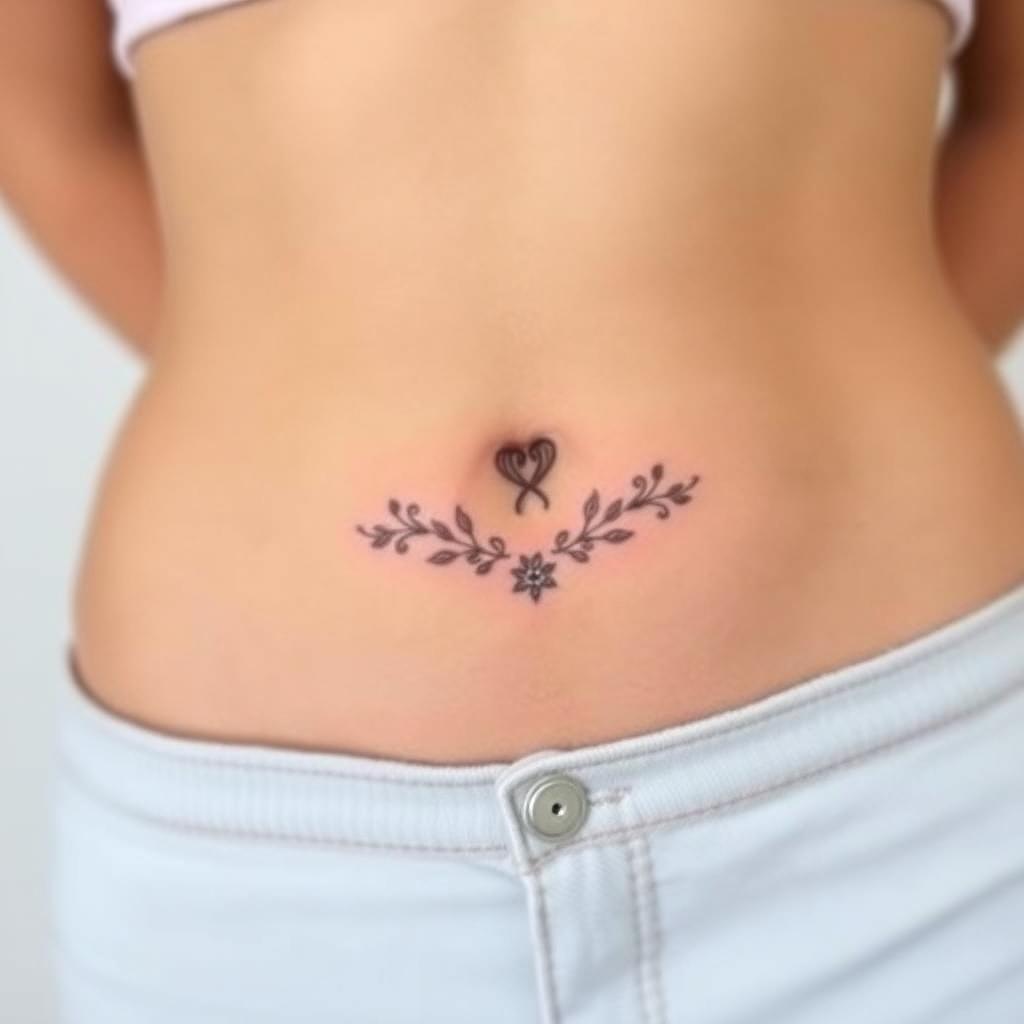
Before you decide, ask for detailed quotes from artists and clinics. Find out if they use special pigments for scars and how many sessions they suggest. Knowing this helps you compare and choose the best option for your budget.
Alternative and complementary options to tattoo cover ups
When tattoos feel too permanent, you have many choices. Each option has its own trade-offs for scarred skin. Think about healing time, cost, and how your scar reacts before making a choice.
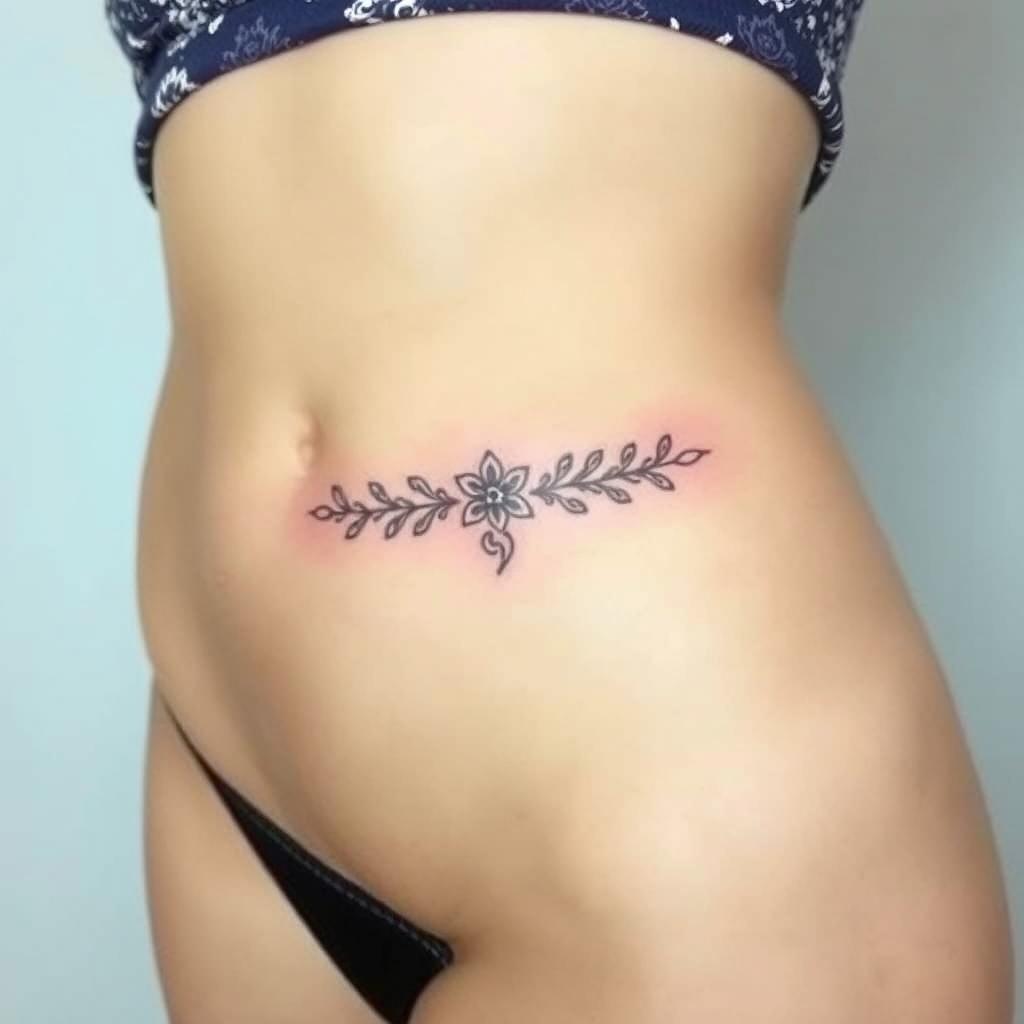
Laser tattoo removal risks and why it may not suit scarred skin
Laser removal for tattoos after a tummy tuck is slow and expensive. Some tattoos take at least 2.5 years and many sessions to fade. Each session costs about $500. Scar tissue may not respond well to lasers, leading to more scarring or uneven pigment.
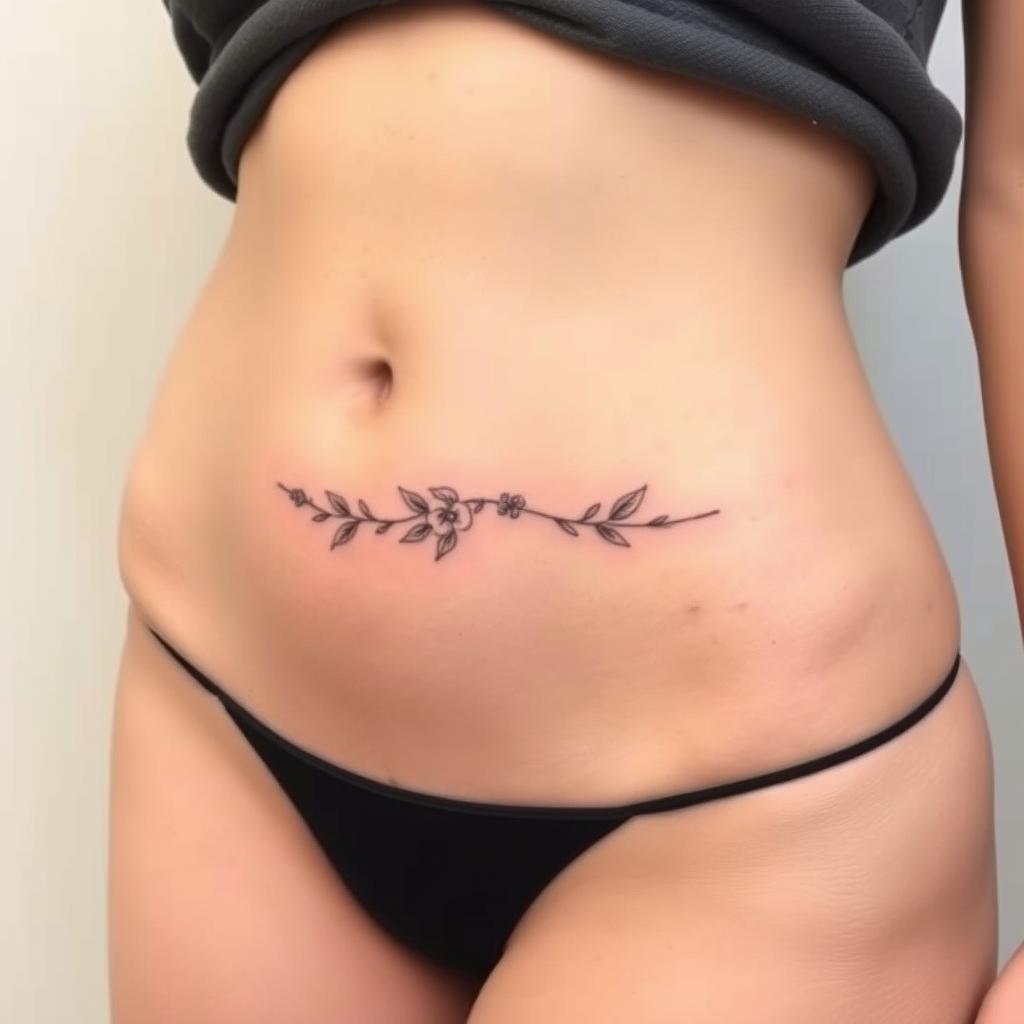
Scar revision surgery, topical treatments, and skin rejuvenation techniques
Scar revision surgery can reshape or reduce visible lines. Talk to your plastic surgeon first. Revision surgery needs downtime and a recovery plan. Non-surgical options include silicone sheets, steroid injections, and microneedling.
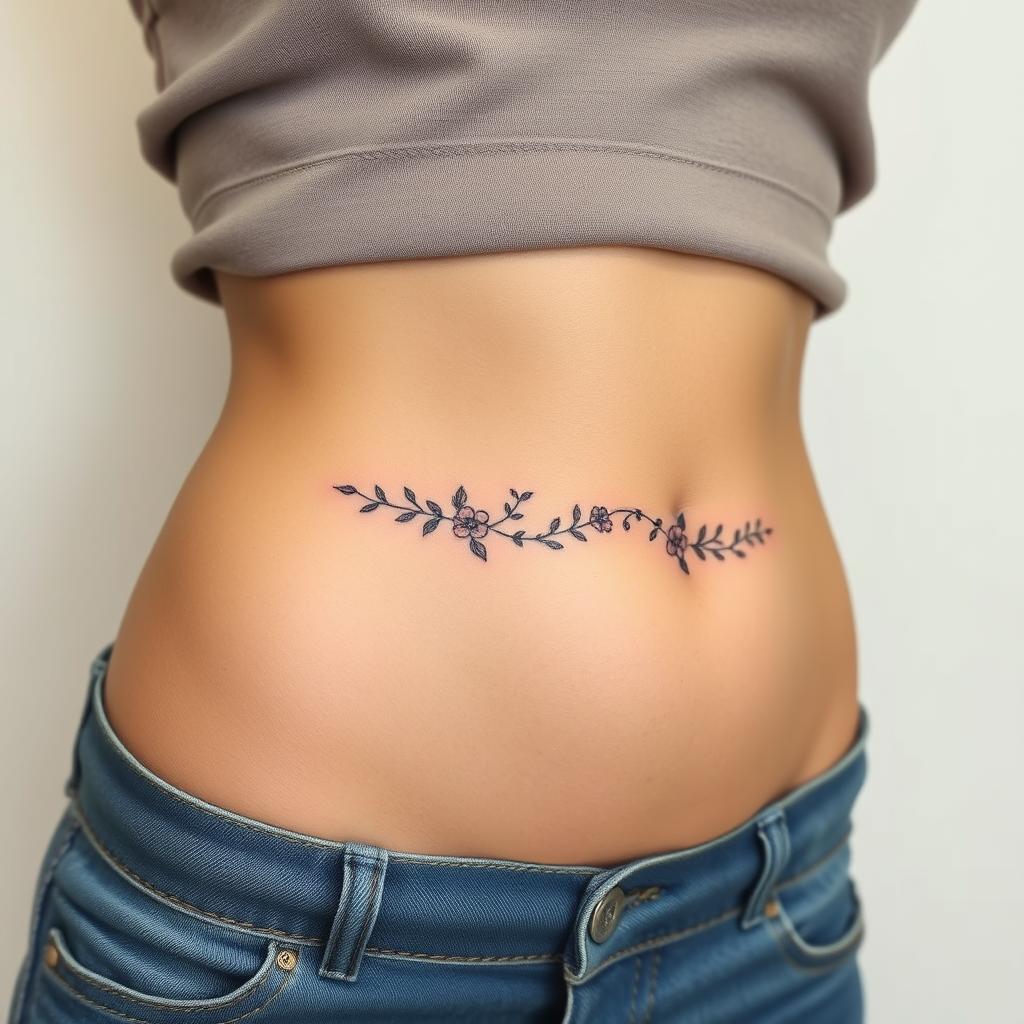
Fractional laser can improve skin texture. But, work with a board-certified provider to avoid harming fragile tissue.
Temporary solutions: realistic temporary tattoos and adhesive covers
Temporary tummy tattoos are a low-commitment way to test a look or hide a scar for an event. Brands like TuckTats make waterproof, FDA-conscious pieces that last 5–7 days. They can mimic permanent tattoos.
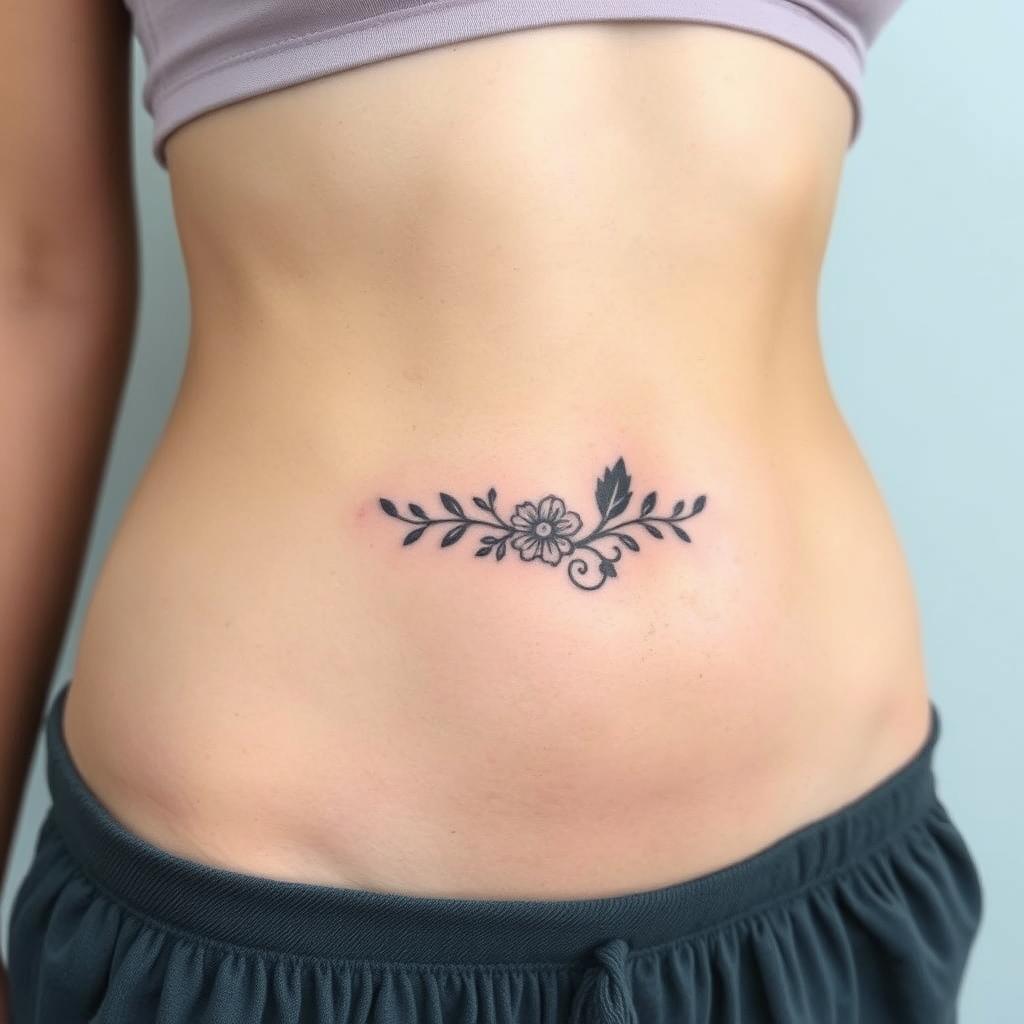
Adhesive covers and special makeup offer short-term concealment. They don’t require surgery or long-term pigment changes.
You can mix approaches: try temporary tummy tattoos or TuckTats while exploring scar revision surgery or skin-rejuvenation options.
If you decide on permanent ink later, your trial run helps refine design choices and placement. This way, the final result feels right for your body and lifestyle.
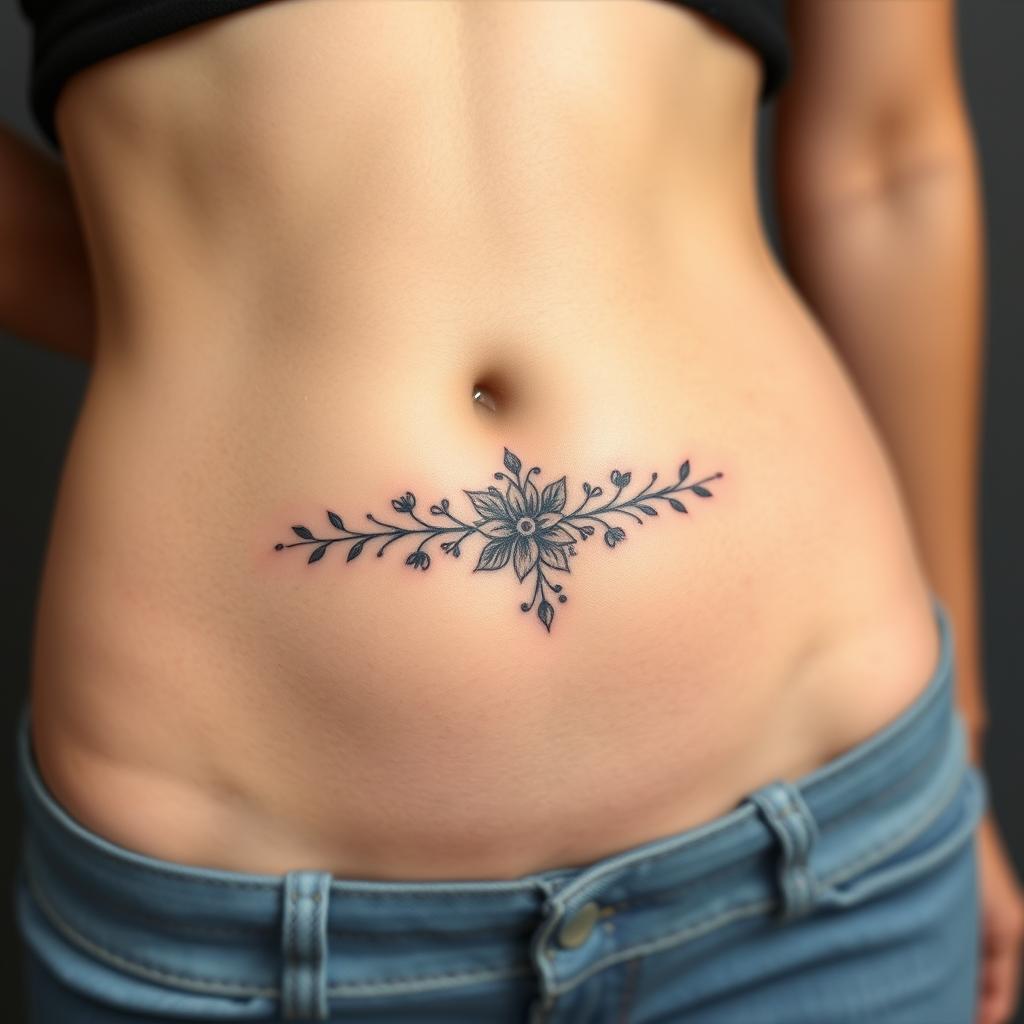
Real stories and before/after examples of tummy tuck scar camouflage
You’ll see real results to help you choose. Photos show how skin-tone camouflage can hide scars. Many are happy with the results when the color matches well.
Studies say matching undertones is key. Custom blends make scars blend in. Scars work best when they’ve settled and aren’t inflamed.
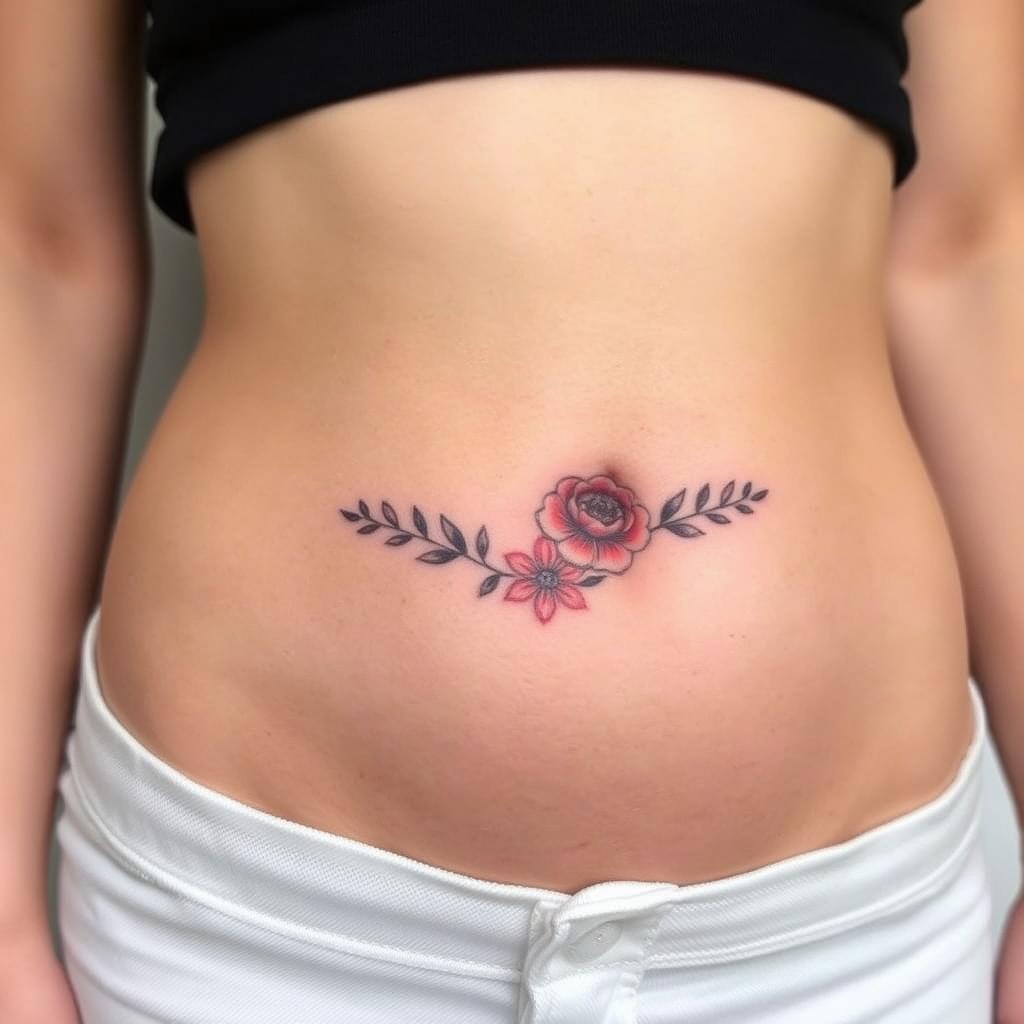
Decorative cover-ups show a different side. Pinterest and social media are full of designs. These designs make scars into art, not just hiding them.
Scar tattoos show the importance of the artist. People who choose skilled artists are happier. Look for artists who have done both camouflage and designs.
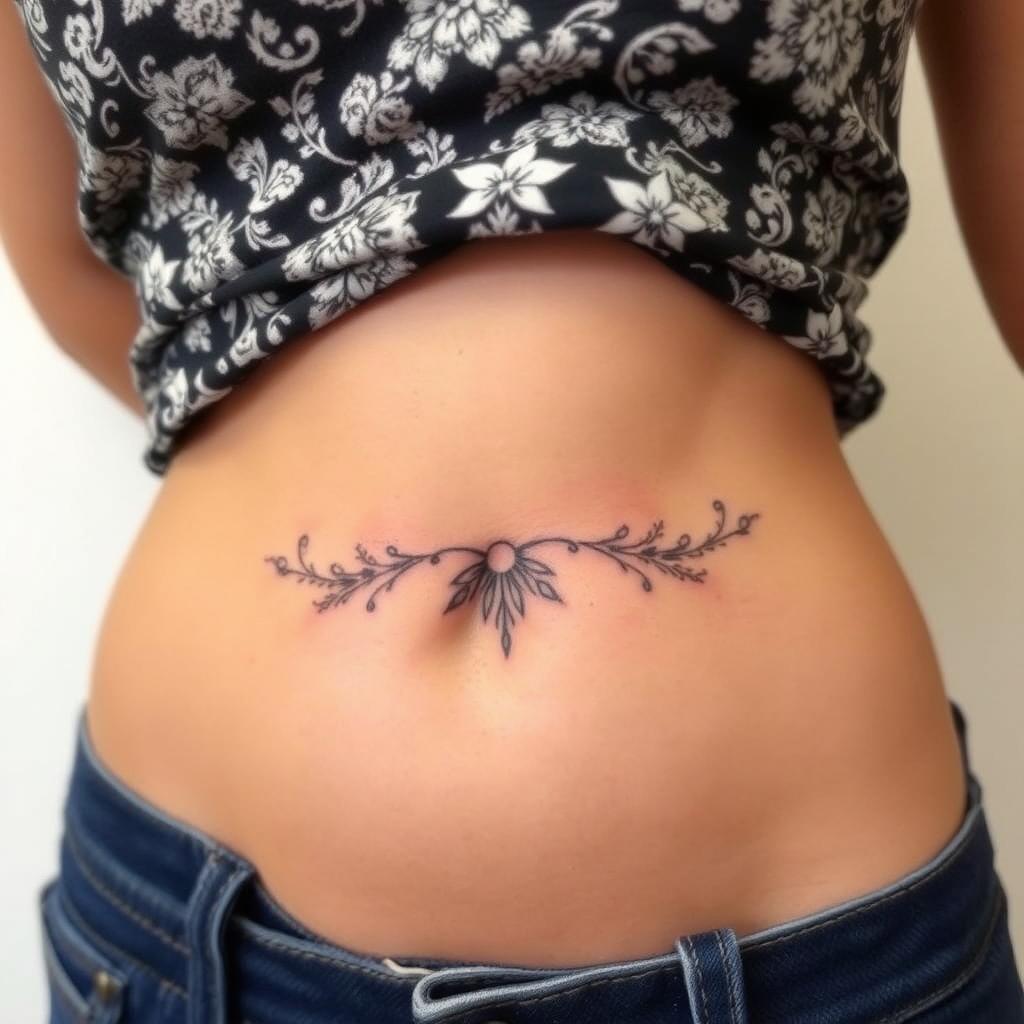
Trying temporary options is smart. TuckTats are good for short-term use. They help you test before committing to permanent ink.
Timing is everything, users say. Wait about two years and talk to your surgeon. This helps you decide what to do next.
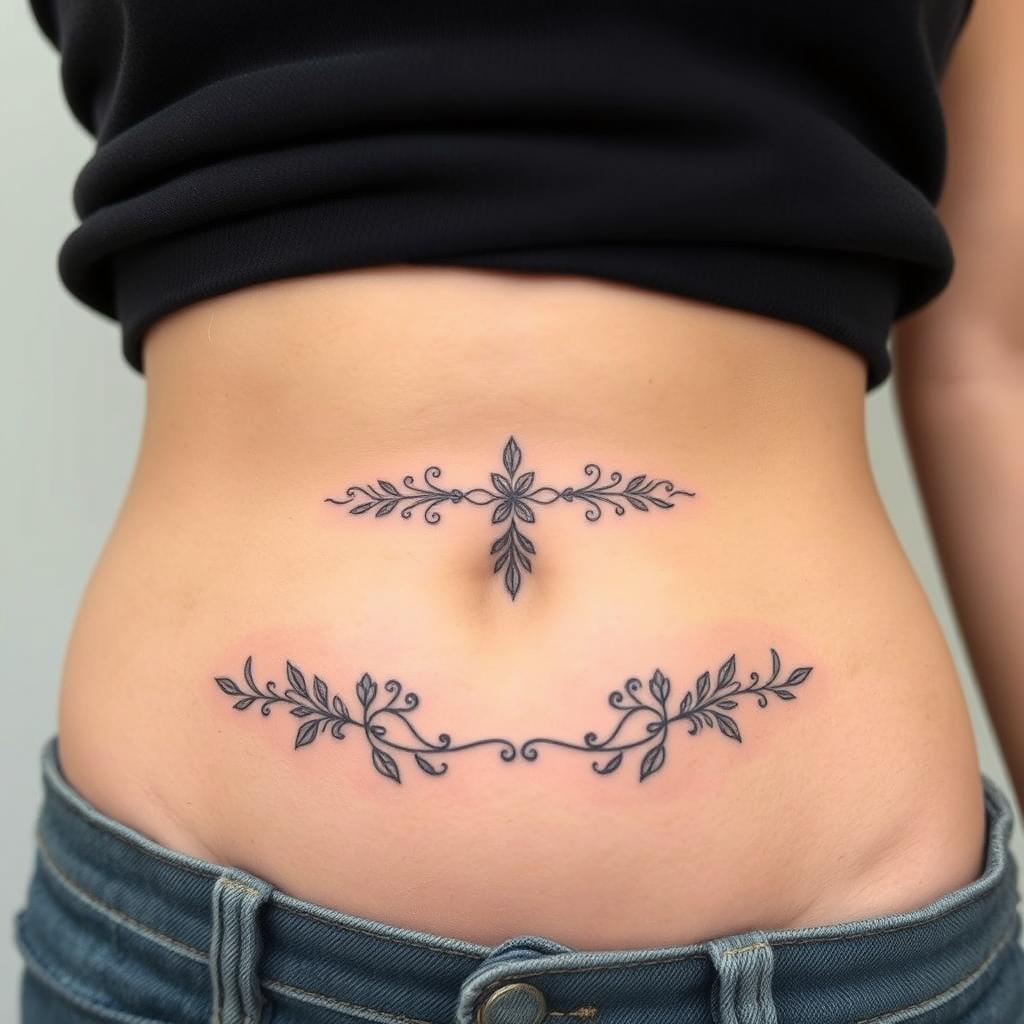
Aftercare is important, too. Touch-ups might be needed, but it’s worth it. Choosing the right artist is key to success.
Photos and galleries are helpful, but talking to artists is best. Use them to plan your scar cover-up.
Conclusion
Thinking about tummy tuck cover up tattoos? They offer two main choices. You can go for subtle skin-tone camouflage or a bold, decorative change. Camouflage tattoos blend scars into your skin tone quietly. On the other hand, designs like flowers or butterflies can make a big statement.
Choose the right tattoo by looking at your scar’s size, color, and texture. Check out tattoo artist portfolios on Pinterest or in tattoo studio galleries. Try temporary tattoos like TuckTats to see how they look before getting a permanent one.
Think about healing time, cost, and how to take care of your tattoo long-term. Meet with a tattoo artist and your surgeon to plan. A good tattoo can make you feel confident again and let you wear more clothes.



